Is it possible to apply regular polish and other combinations of polishes over gel polish? Shellac manicure and nail extensions. Harm and benefit
Every woman strives to ensure that her hands and nails are well-groomed, because this is her business card. Now shellac manicure and nail extensions are quite popular. To make your nails beautiful without harming them, you need to know about the pros and cons of such procedures.
What is shellac?
To make your nails look beautiful and well-groomed, various products are used as a coating. Shellac and gel or acrylic nail extensions are now becoming increasingly popular.
If you have your own long strong nails, then good choice will become shellac. It is a resin of natural origin that has unusual properties. The substance is practically resistant to mechanical damage and is resistant to oxidizing agents. These are very important indicators, since ordinary varnish begins to peel off almost on the second day after application.
The creators of Shellak were American scientists. The product first appeared on the market in 2010 and since then began to be in high demand. This means - great alternative extended nails. It combines both gel and varnish. Shellac looks neat on nails and does not make them look rough. It is used by women of all age groups.
Features of extended nails
As for extended nails, they can be absolutely different forms and materials.
The list of products used for nail extensions includes:
1. Gel. One of the best means, making artificial nails as natural and natural as possible. Most often, when carrying out a procedure such as extensions, this is what is used.
2. Acrylic. It is a substance in the form of powder and liquid. It dries very quickly, so it needs to be applied very quickly. It is also quite often used when performing manicures.
3. Fabric. They mainly use silk, which is applied to the nail in layers and impregnated with gel or glue.
4. Biogel. It is considered a relatively new product that strengthens nails and provides oxygen access to them.
5. Resin. Natural material, which does not spoil the nails and looks beautiful.
Which treatment is best for your nails depends on the condition of your nails. If you want to leave your length, it is better to choose shellac. In the case when the nails are very brittle, but would like a long manicure, extensions are suitable.
How is the procedure performed?
If you decide to choose extensions, it will be interesting to know how it is performed.
To begin with, select the type of extension, which can be:
1. Tips. When performing the procedure using tips, it is necessary to glue an artificial nail onto a real one; special glue is used for this.
2. Forms. They are templates of different variations, made of Teflon, metal or paper.
As a rule, tips are now used very rarely; they are not as practical as a manicure created using forms.
Features of the nail extension procedure
The extension procedure consists of several successive stages, including:
Choice of shape and material;
Treating the hands of the master and the client using antiseptics;
Cuticle removal;
Filing the nail to the shape of the extended one;
Polishing the nail plate;
Degreasing the surface;
Using a bonder or primer to create an adhesion effect between the artificial material and the nail;
Application of gel or other material;
Decorative design and coating with an additional layer.
On average, the duration of the procedure is 1.5-2 hours. After the nails grow back, corrections need to be made in 2-3 weeks.
How is shellac made?
When using shellac, the technology is slightly different. It includes the following stages:
Selection of gel, its structure, color;
Filing nails to the desired shape;
Cuticle removal;
Polishing the nail plate;
Degreasing;
Base coat;
Gel application;
Finish coating;
Removing the sticky layer;
Hydration.
This procedure takes less time than extensions. Nails coated with gel polish do not break and look beautiful for a long time.
What are the advantages and disadvantages of the extension procedure?
Like any procedure, shellac and extensions have their pros and cons.
Let's start with the build-up. The main advantages of extended nails include:
Beautiful aesthetic appearance;
Possibility to create any shape;
Quick adaptation to artificial material;
Maximum resemblance to natural nails;
Possibility of hiding defects of the nail plate;
Durable coating that maintains a beautiful manicure for a long time.
Extended nails look very good if they are done well. Despite the many positive aspects, there are also negative ones, which can also play a role in the choice of manicure.
The extension procedure has the following disadvantages:
High cost and duration of the procedure;
The need for regular correction;
Deterioration in the quality of the natural nail after removing the coating;
Possibility of acquiring fungus;
Some inconveniences at home and work.
It is not recommended to perform the procedure if there is any damage to the nail plate, including those caused by fungus. It is also better not to extend nails if you have damaged cuticles, diseases of the cardiovascular system, or diabetes. If you are taking antibiotics, hormonal drugs or are pregnant, then it is also better to postpone the procedure.
Pros and cons of using shellac
Shellac also has its advantages and disadvantages. The first include:
The ability to grow your nails;
Good coverage that long time sticks to nails;
Beautiful glossy shine;
Large selection of colors;
No harm;
The ability to independently perform the procedure and remove the coating.
Shellac has fewer disadvantages. These include the high cost of the product and the procedure itself if it is done in a salon. Nail correction is also needed here.
The product is also capable of creating microcracks due to temperature collisions. This can be facilitated by taking a bath, cleaning with rubber gloves, and washing dishes. The action of heat and moisture expands the nail, then it contracts again.
All this leads to water and dirt entering through microcracks in the coating, which promotes the development of bacteria. This can cause fungus.
Contraindications to the use of shellac are the same as for nail extensions.
What do doctors think about the procedures?
As for medical specialists, they do not really approve of such manicure options as nail extensions and shellac. This is because they can lead to allergic reactions body and to damage to the nail plate. Also, due to the lack of oxygen supply to the nail, fungus may develop. With prolonged use of these procedures, the shape of the nail plate may even change.
If you still really want to extend your nails or cover them with shellac, follow these recommendations:
1. Perform the procedure only if the nails are completely healthy.
2. After completion, take vitamins and microelements that strengthen the nail plate.
3. Periodically take nail baths and lubricate the cuticles.
4. If you have contraindications, you should not sacrifice beauty for the sake of health.
5. Before you carry out the procedure of extension or coating with gel polish again, you need to let your nails rest and walk around for a while without them.
If you are not alarmed by the disadvantages of such procedures, and you want your manicure to be stylish, fashionable and beautiful, be sure to try shellac or extended nails. At the same time, do not forget about contraindications and rules of care.
– the most popular coating used for nail design today. Thanks to its unique composition, shellac manicure combines the most best qualities, which will help you not only keep your nails well-groomed for a long time after the procedure, but will also help them become significantly stronger.
Why is shellac the best nail coating?
- Stays on nails for a long time;
- Allows you to grow your own nails;
- Strengthens the nail plate;
- Gives nails a glossy shine;
- The composition of shellac contains a smaller amount of aggressive substances than the composition of gel polish;
- Shellac nail design allows you to use a huge palette of colors.
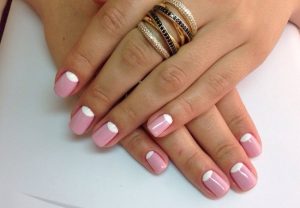
You can learn more about what shellac coating is and what rules exist for its application here.
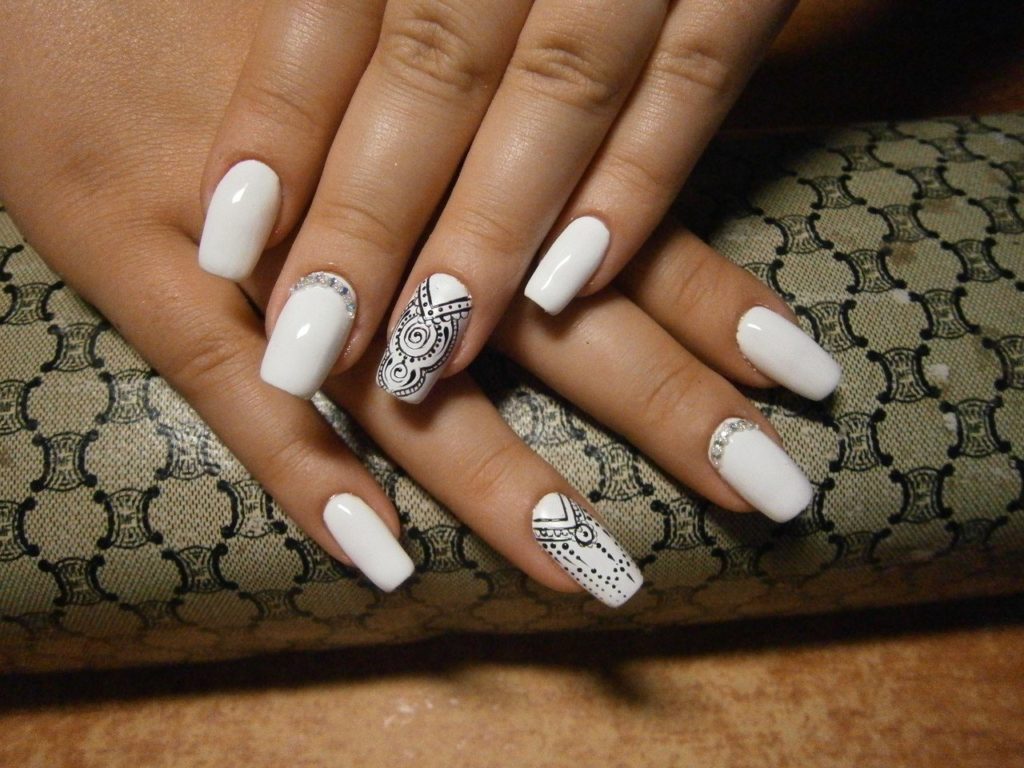
A shellac manicure will last on your nails for one to two weeks (less often two or three). Then you need to remove the varnish and apply a new layer if desired. 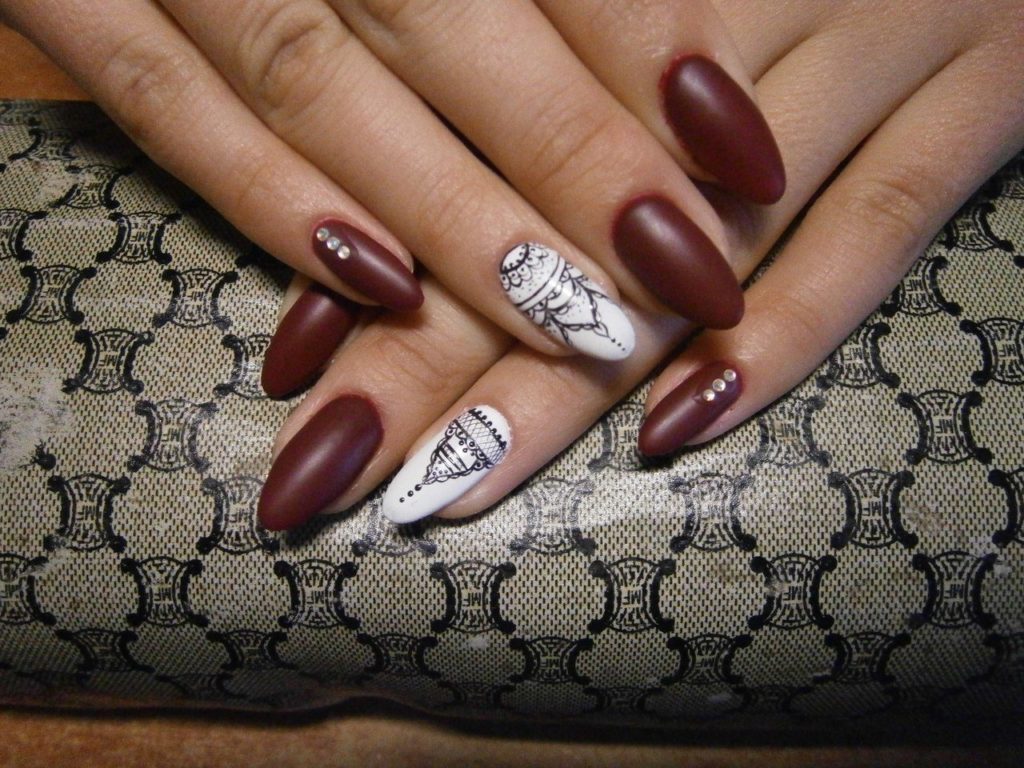
Shellac manicure. Secrets and tricks
- During the first 3 hours after applying shellac, do not expose your nails to high temperatures ( hot water, steam, bath, sauna, etc.). This way the manicure will last much longer.
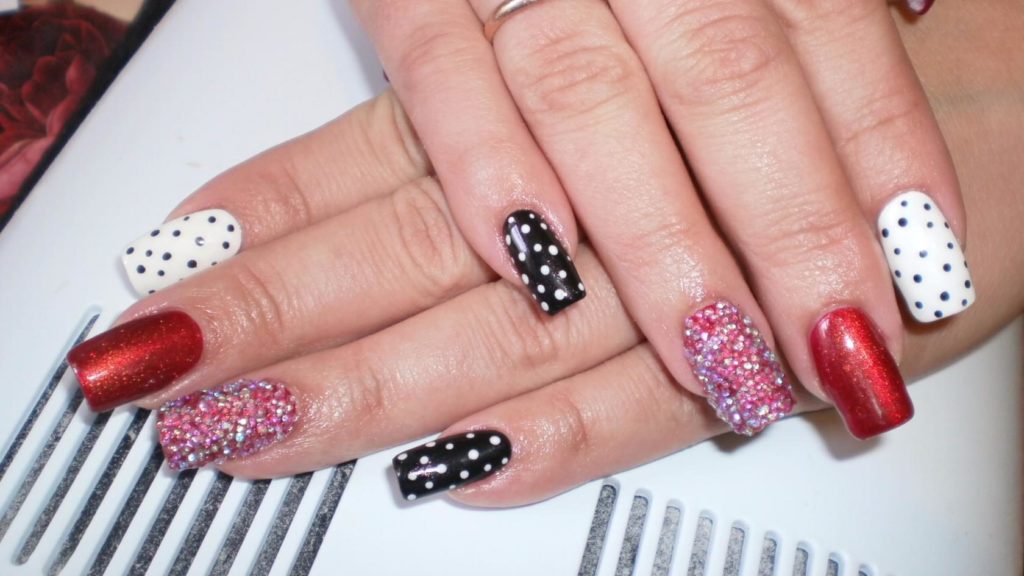
- Unless you have special skills, do not try to remove shellac yourself. Otherwise, you risk damaging your nail. It is better to seek help from a specialist.
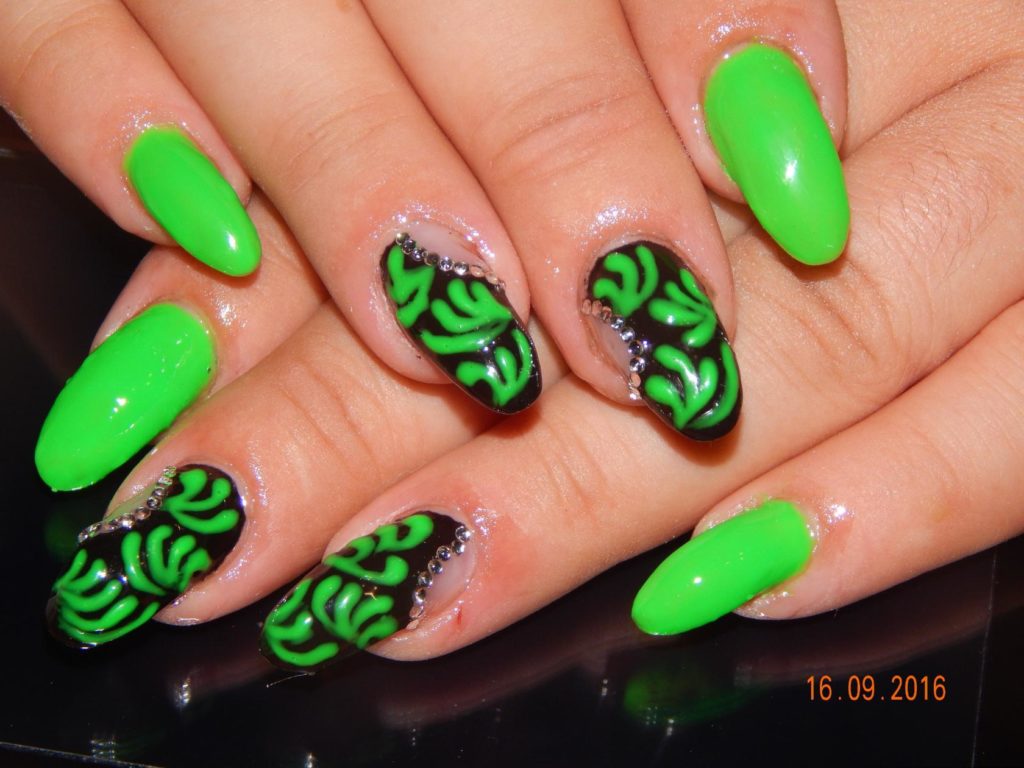
- When performing a shellac manicure, make sure that the varnish does not get on the cuticle. This way your nails will look neat and the coating will last longer.
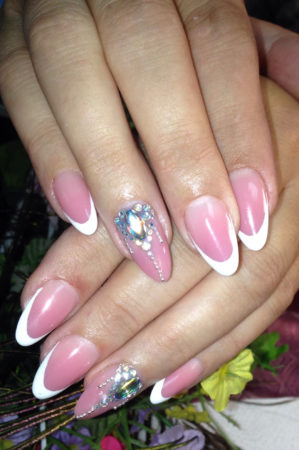
- Shellac nail design is the only method to give your manicure an extraordinary shine and shine that will last on your nails for several weeks.
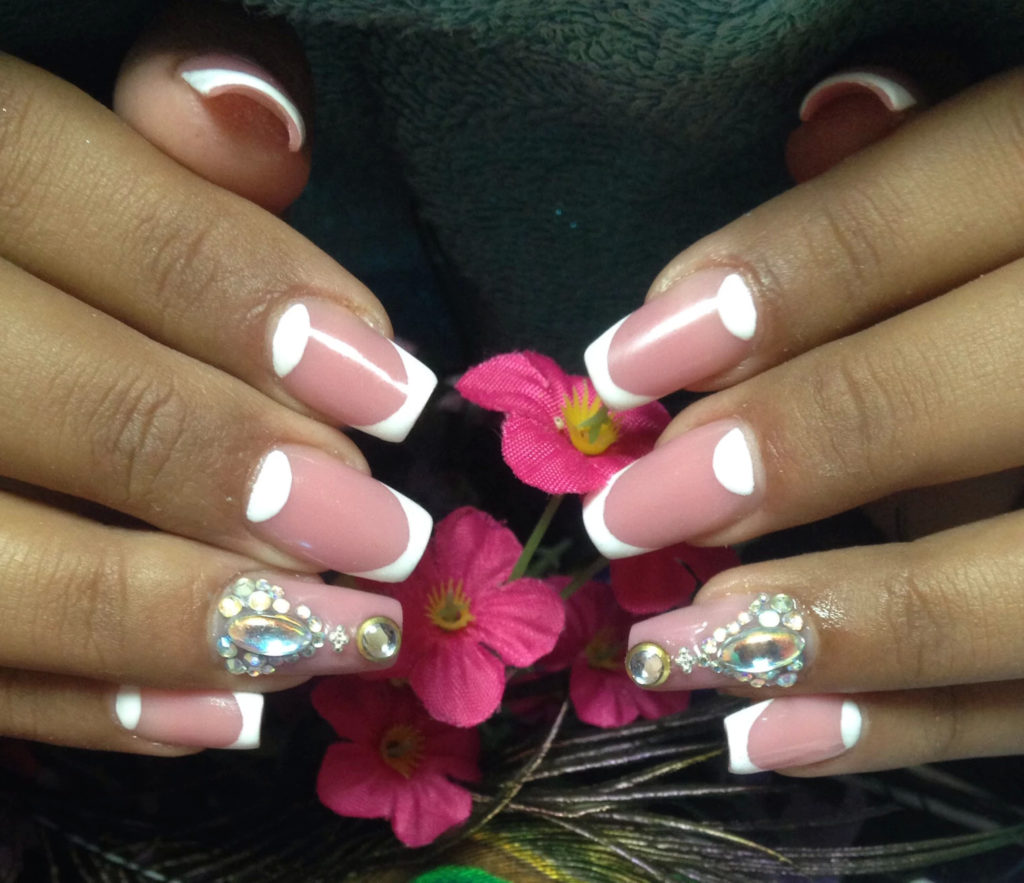
- If you don’t have time to update your manicure (remove and apply a new coating), ask the master to highlight the lower smile of the nail in a tone contrasting with your main color of the coating. This trick will help you if there is absolutely no time, and in a few hours you should shine at 100%.
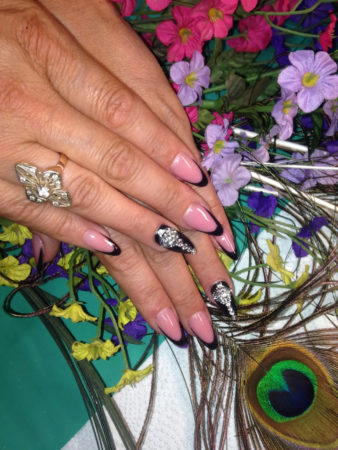
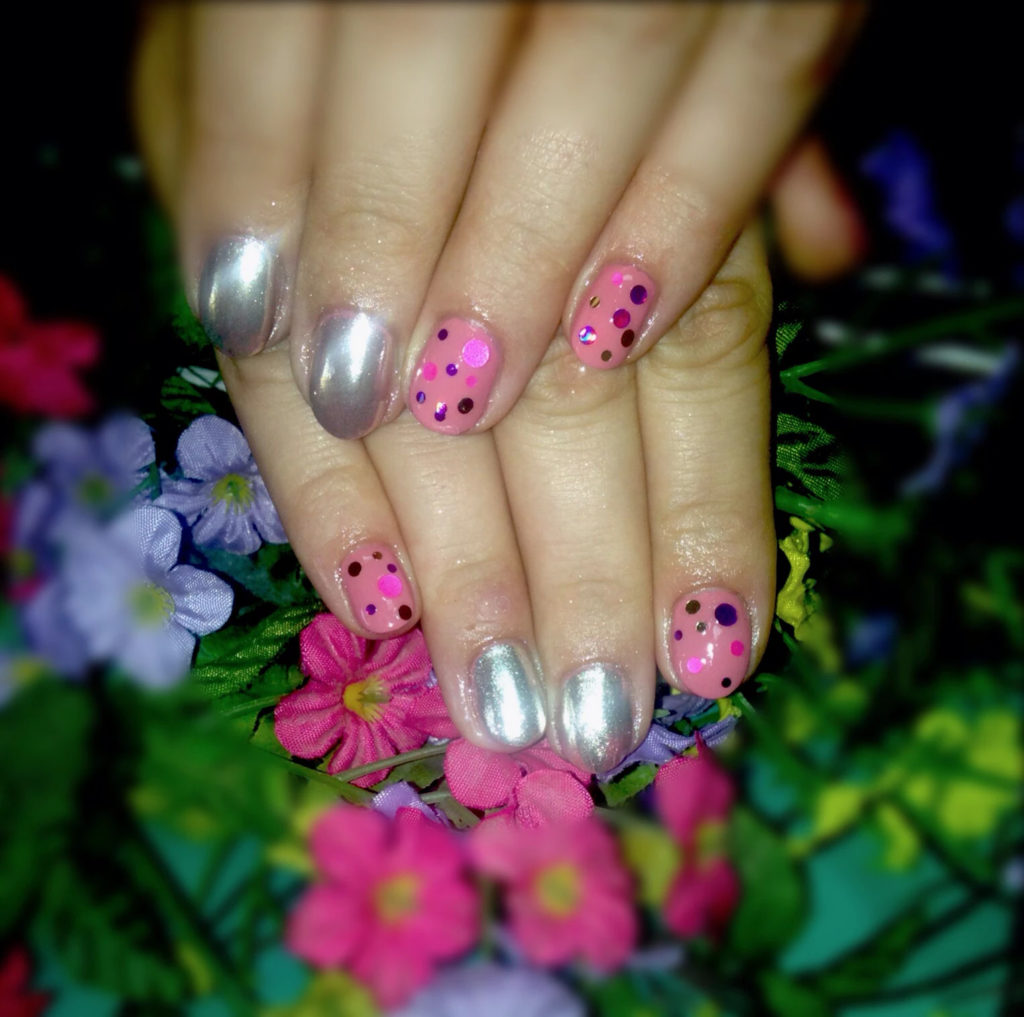
How to wear shellac correctly?
In order for your shellac manicure to last you much longer (2 or more weeks) without cracking or chipping, you need to follow a few simple rules.
- Do not use a file or trim your nails
- Do not pick at the coating and avoid its contact with hard surfaces (for example, picking up various lids or stone surfaces with your fingernails)
- Wear gloves when cleaning wet
- Do not use products that contain acetone
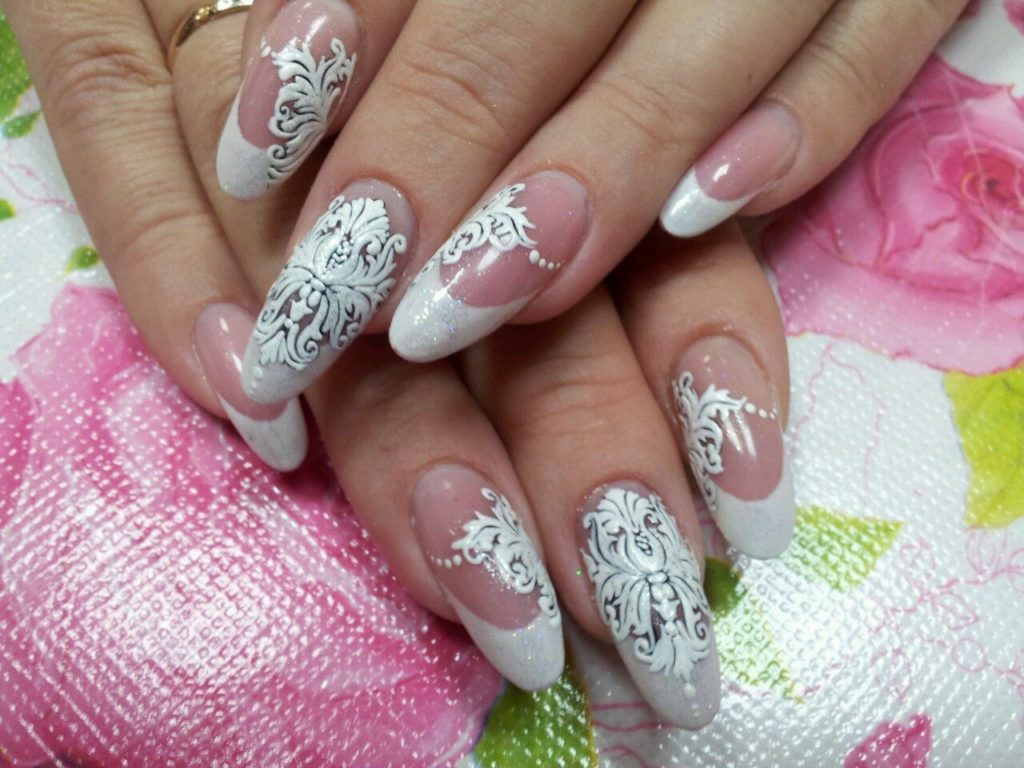
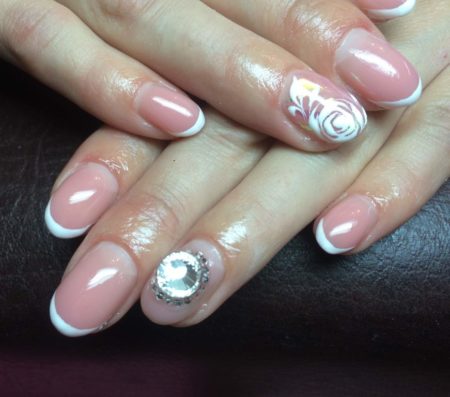
FAQ
How much does shellac nail design cost?
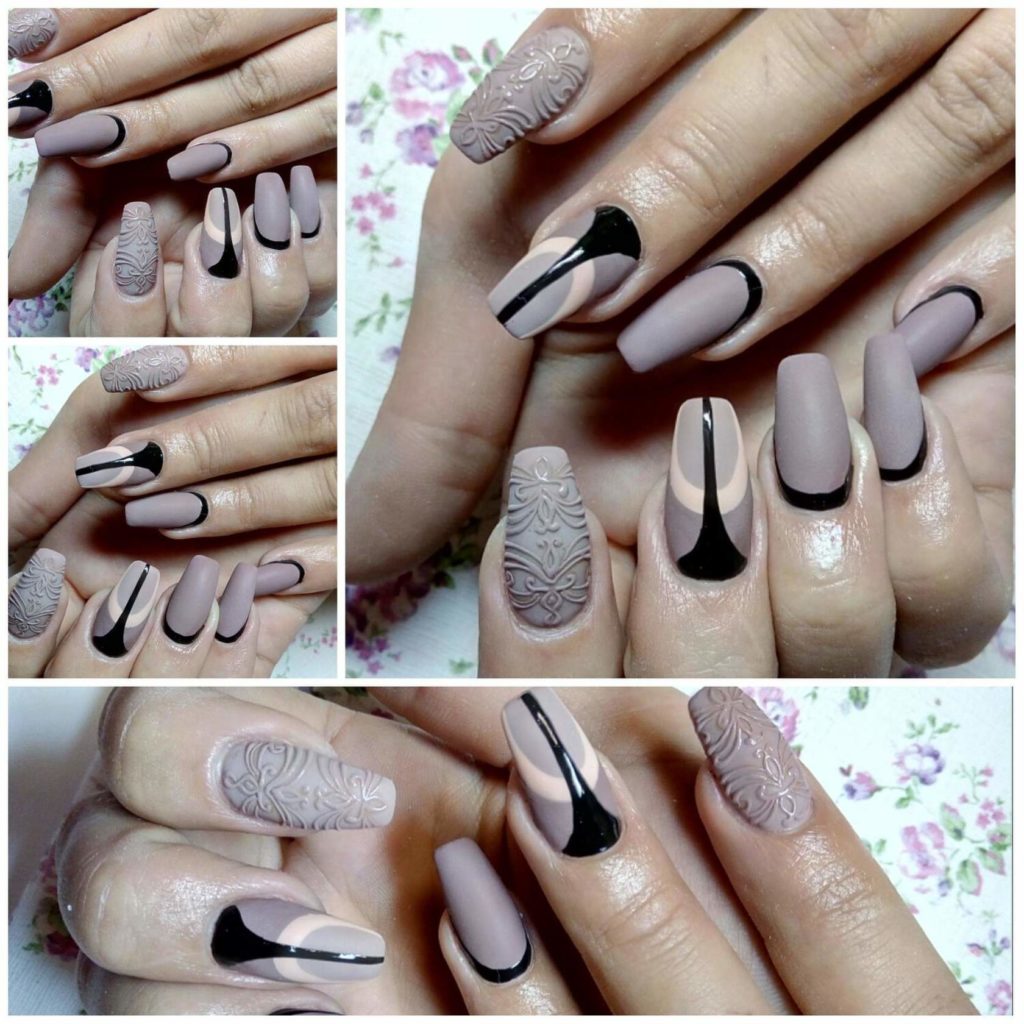
Nail design with shellac will cost you an average of 1,000 rubles and more. Everything will depend on the design you choose, additional decorative elements and the complexity of the work. Often the cost of the work is equal to the price of standard nail extensions.
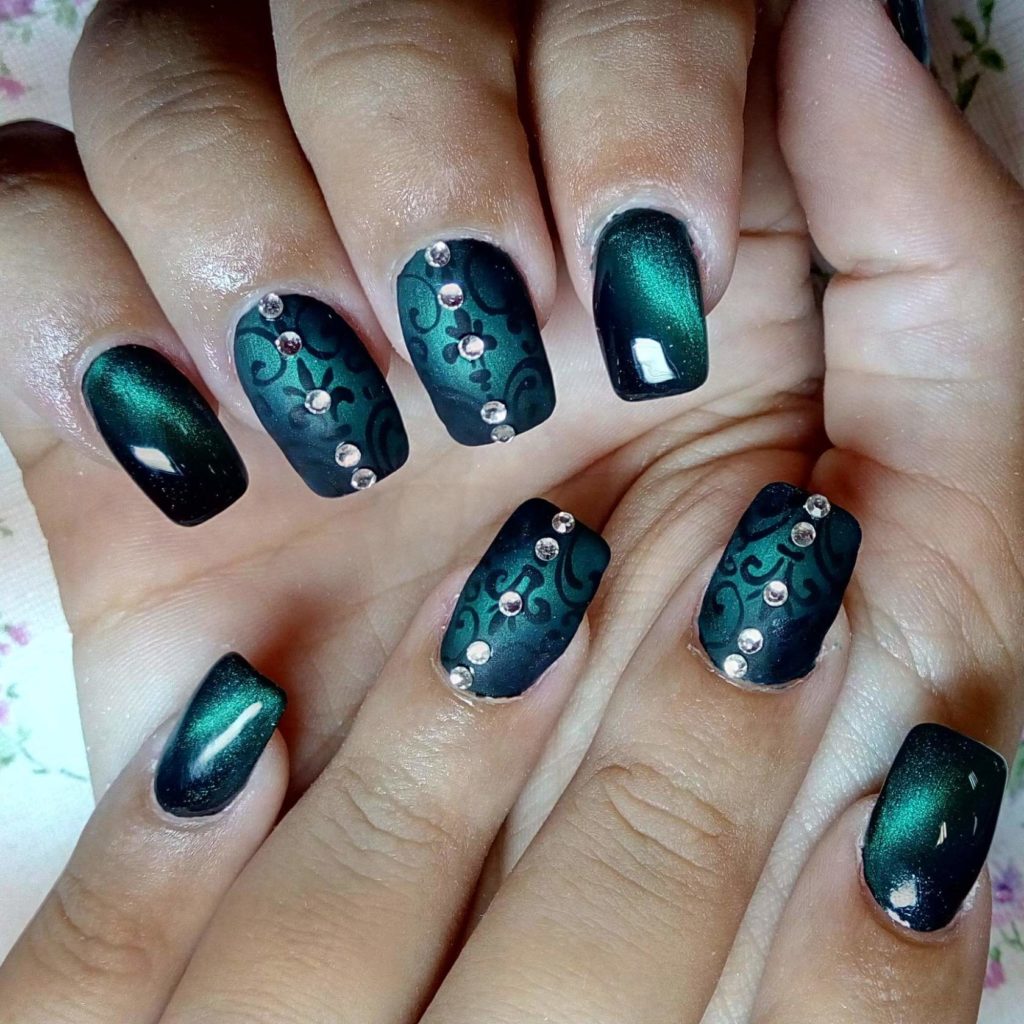
Is it possible to make shellac nail designs at home yourself? 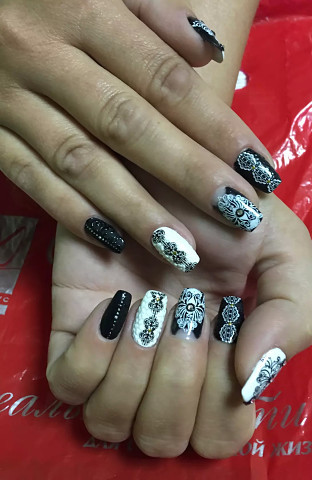
Yes, you can, but provided that you have all the necessary skills and knowledge. Otherwise, it’s easier and much cheaper to get a similar manicure done in a salon. Firstly, a UV lamp and varnishes are not cheap, and secondly, shellac is much more difficult to apply than regular varnish, since its consistency is more sticky.
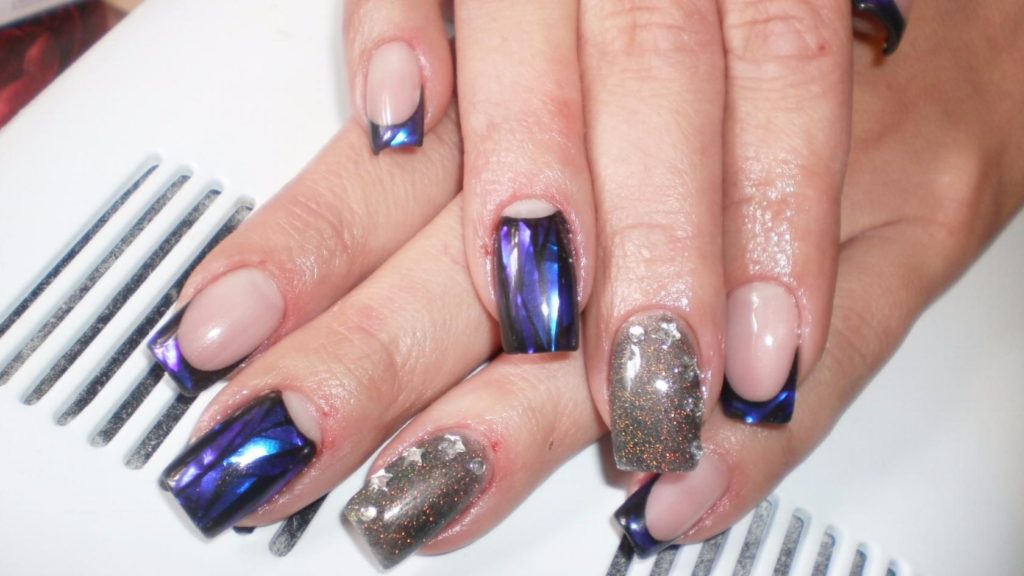
Can shellac be applied to damaged nails?
If your nails are peeling, shellac is not recommended. A nail plate in this condition requires special care - hydration, nutrition, taking a course of vitamins, etc. Any salon technician will tell you that in this condition, the varnish will only last on the nails for a couple of days.
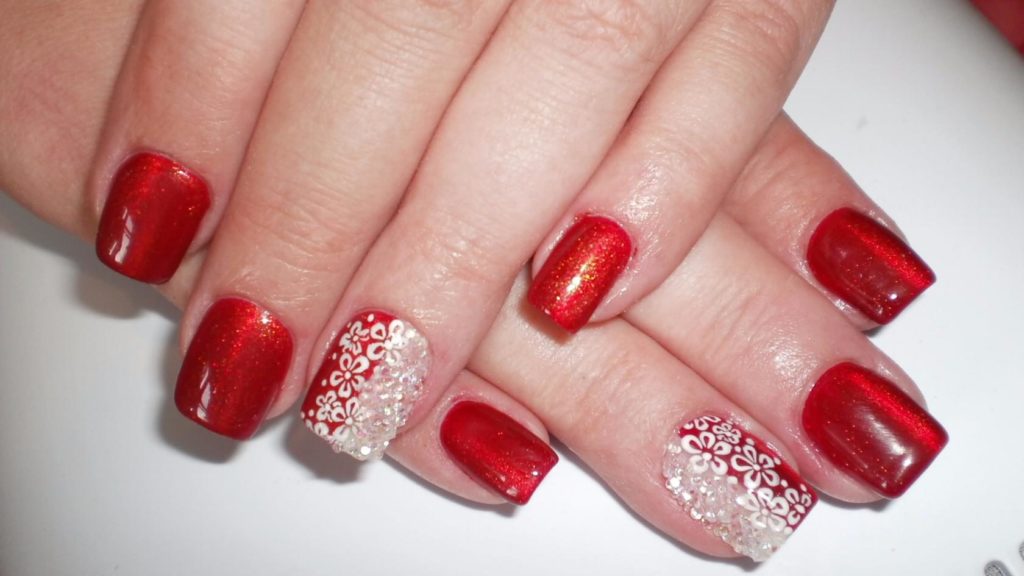
If your nails are thin, brittle, but do not flake, then shellac will help you strengthen them and grow them to the desired length. 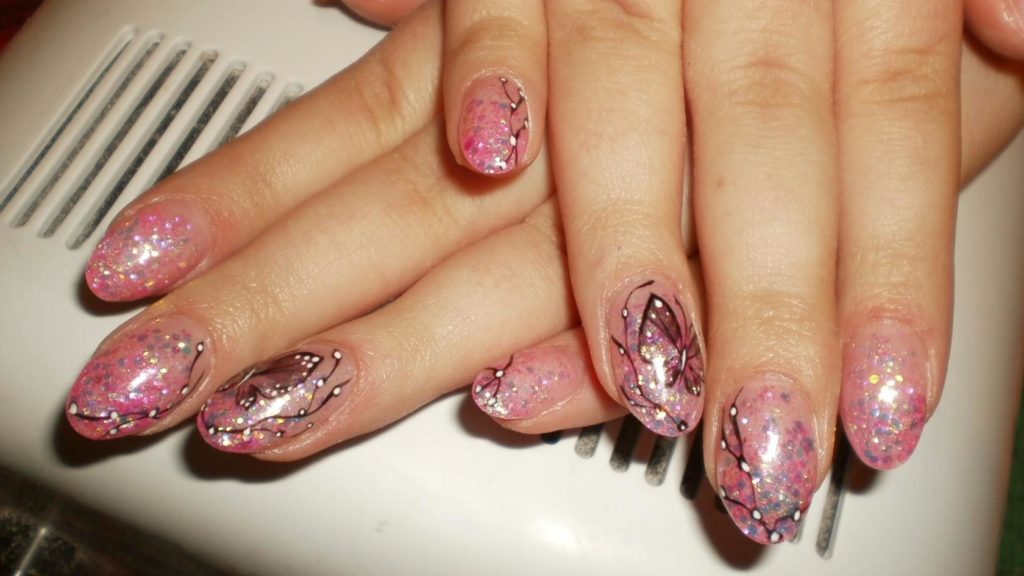
At what age can you apply shellac to your nails?
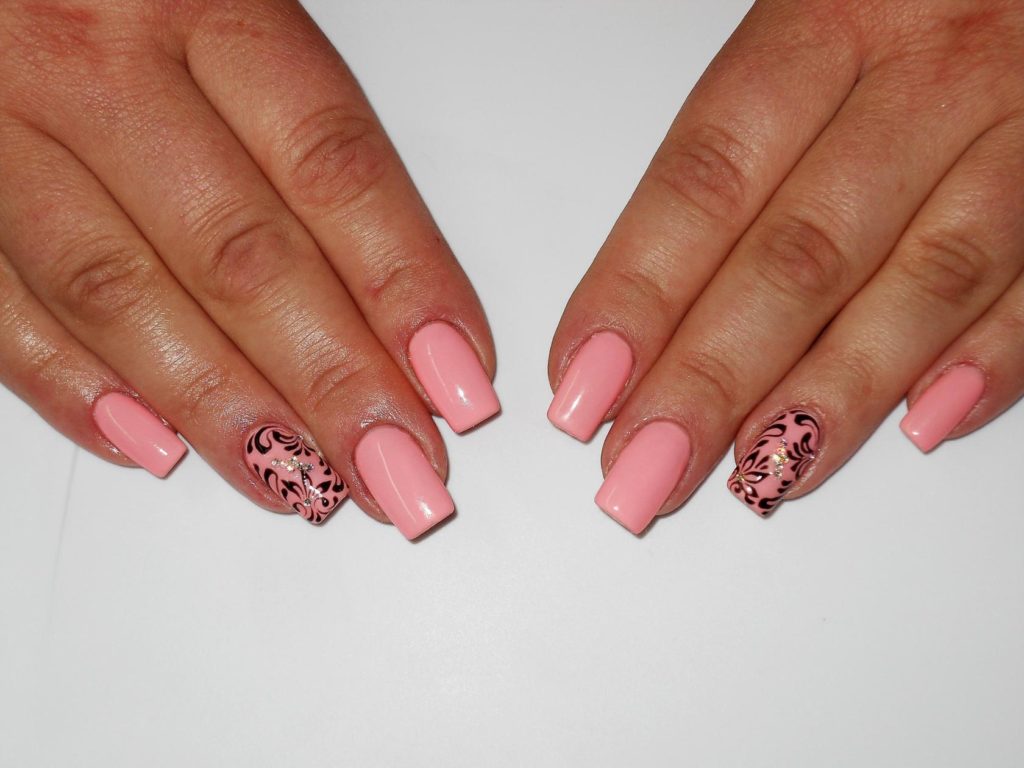
You should start covering your nails with shellac from the age when the child’s nail plate is already fully formed, namely from 17-18 years old. In more early age Wearing a shellac manicure every day is not recommended, with the exception of holidays when a girl wants to look special.
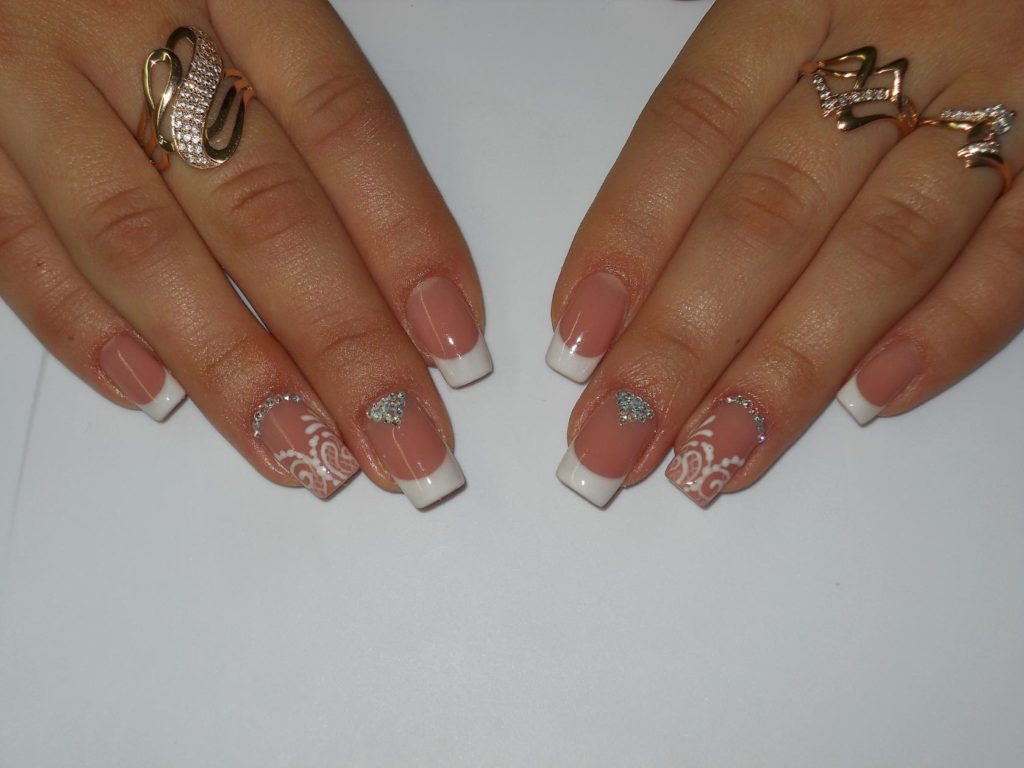
Is it possible to apply shellac to extended nails?
Extended nails can be coated with any varnish and decorated at your discretion. There are no prohibitions regarding the use of shellac for extended nails. However, the question arises: why is it necessary to use this trick?
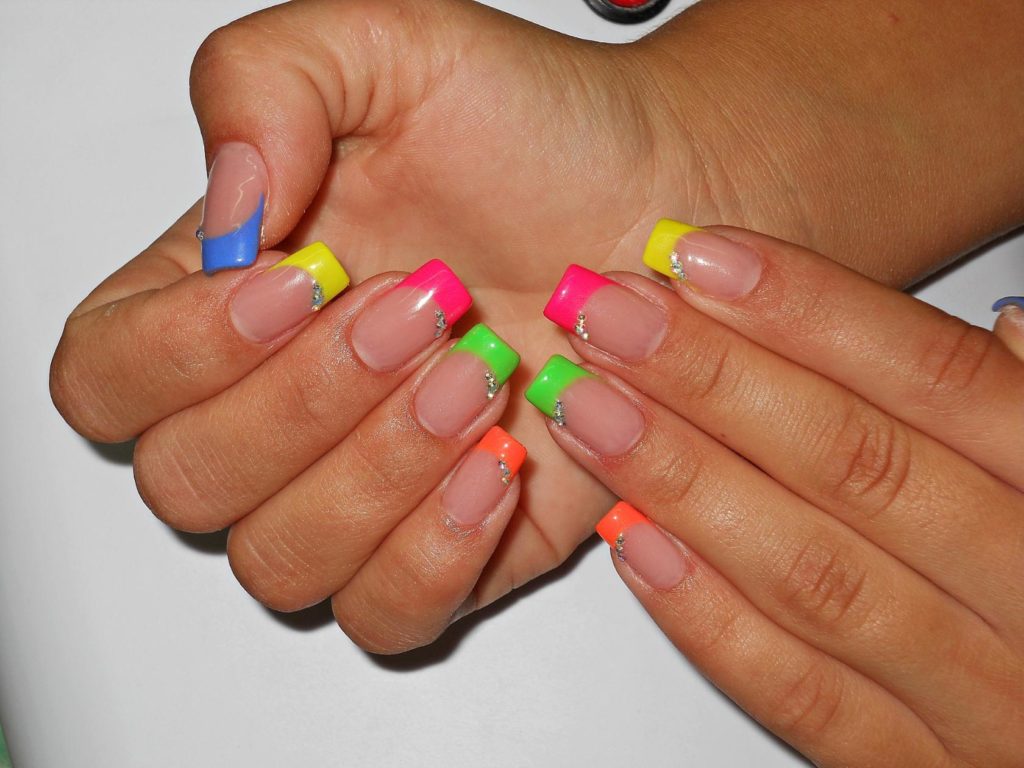
What condition will your nails be in after removing the shellac?
Shellac manicure does not harm the nails at all, provided that it is applied and removed correctly. This manicure is suitable for absolutely everyone, without exception. Shellac does not contain formaldehyde, toluene, or dibutyl phthalate, which, in fact, cause irreparable damage to nails.
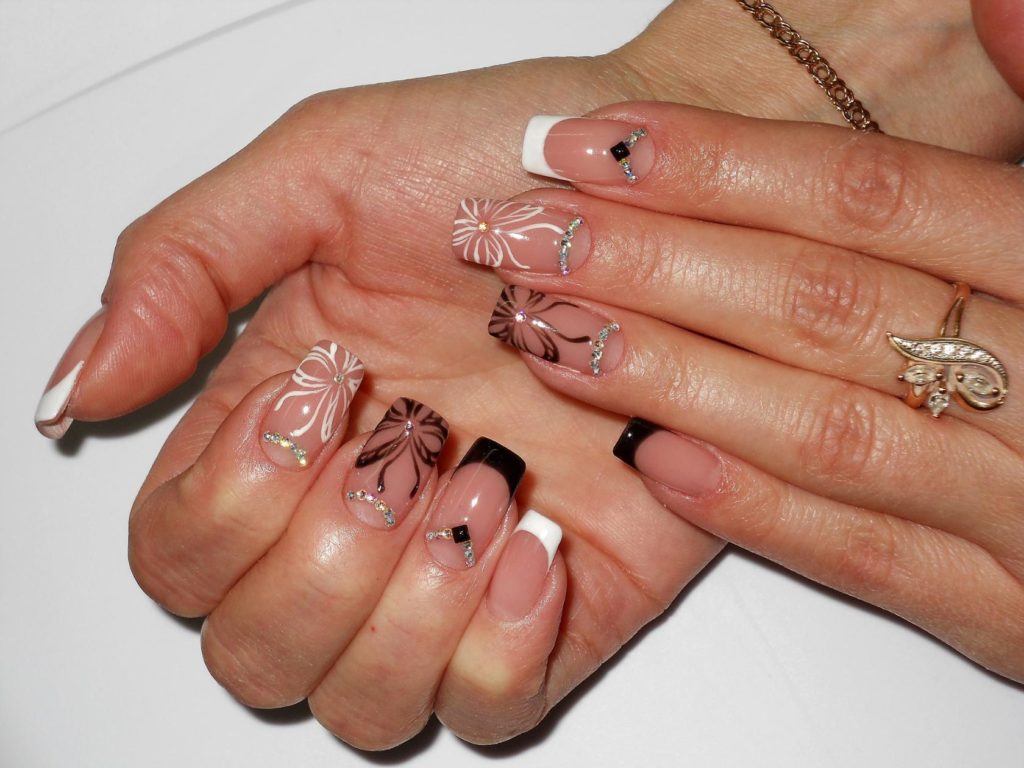
If shellac is the least harmful to nails, then can you wear it all the time?
No you can not. Of course, only if you are not afraid to “injure” your nails. Despite the fact that the composition of this varnish is the most optimal for nails, you should not wear it constantly, since any coating - extended nails, varnishes - interferes with the natural breathing of the nail plate. You need to take a break and give your nails a rest once every three months, otherwise you risk problems such as yellowing of the nails, splitting or increased brittleness.
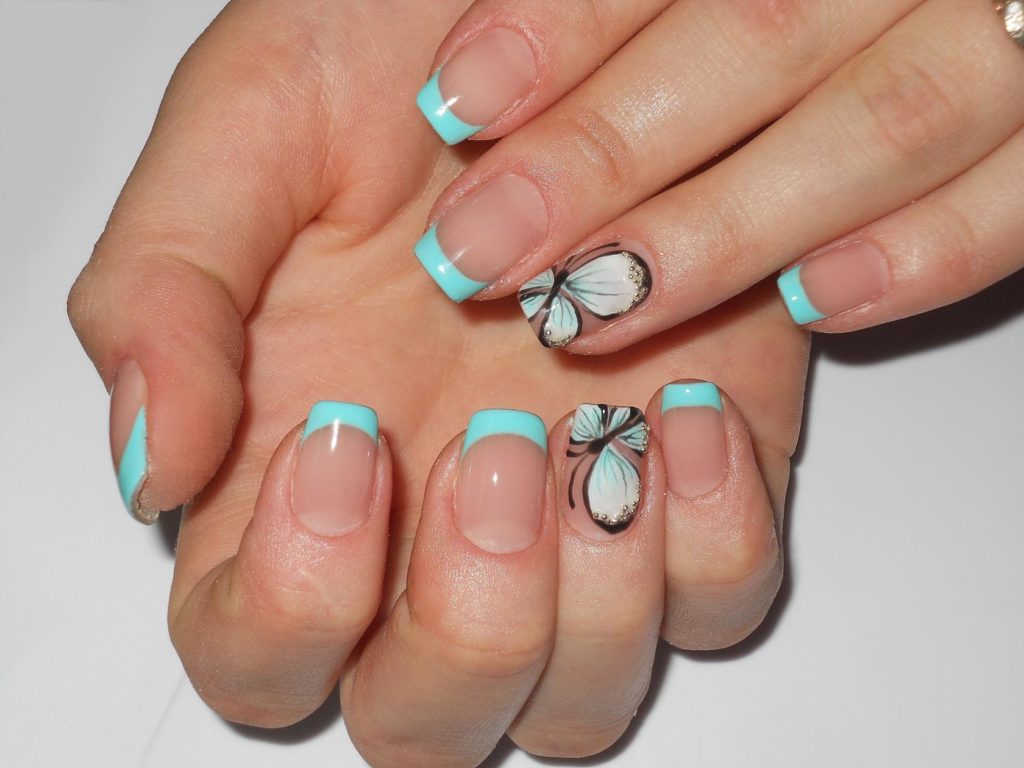
Based on all of the above, let’s define with you the main advantages of shellac coating and its disadvantages:
pros
- does not harm the nail plate, thanks to its “gentle” composition;
- can be applied to brittle and weak nails to strengthen them;
- with preliminary training, a manicure with shellac can be done independently at home;
- retains the bright color and shine of the coating for two or more weeks.
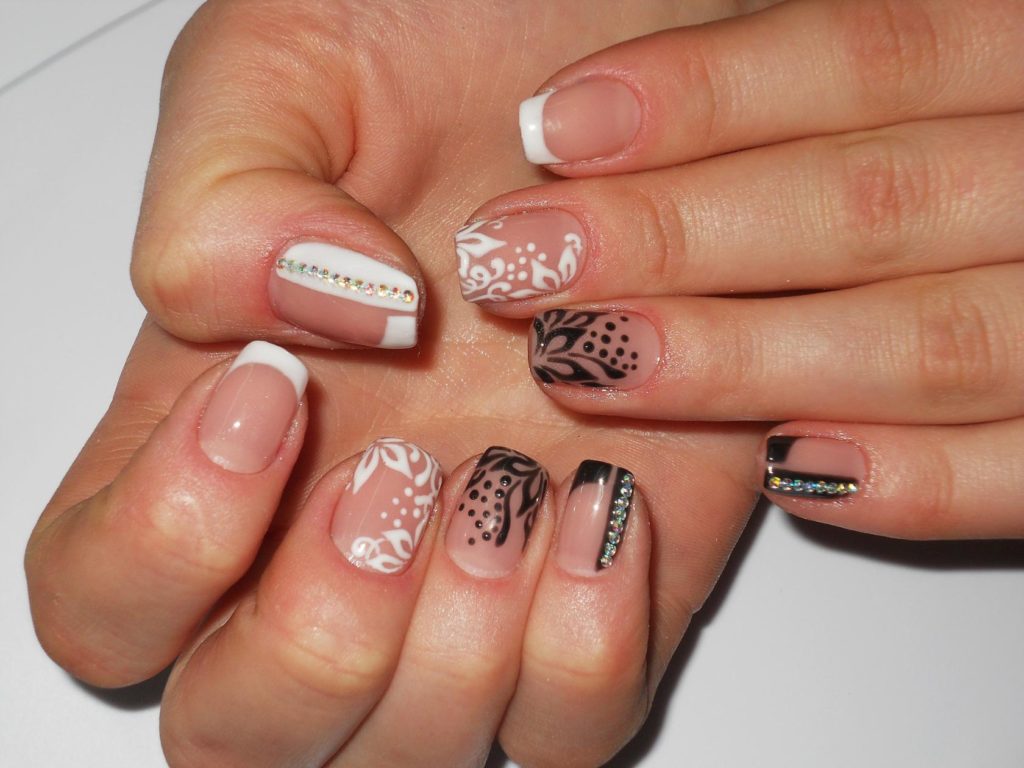
Minuses
- high cost of coating compared to other coatings;
- If removed incorrectly, it can damage the nail plate, so without experience and the necessary skills, it is better to consult a specialist.
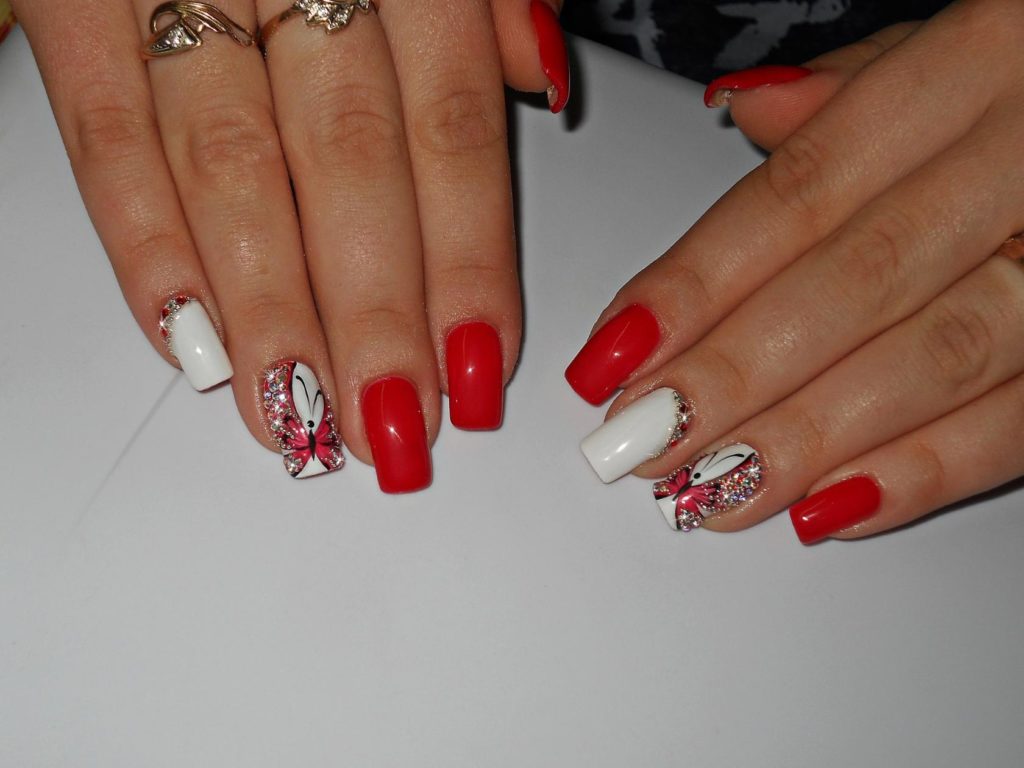
Fresh shellac nail design ideas
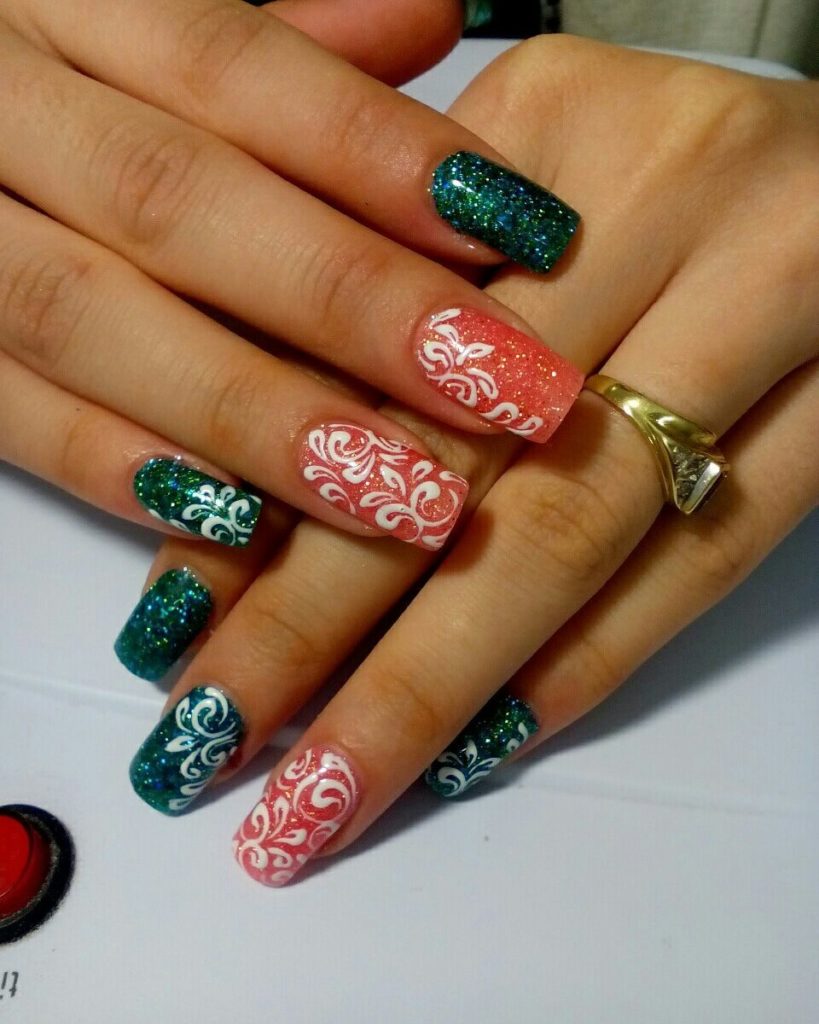
Shellac manicure is one of the most popular coatings. Millions of women around the world choose it for its durability and the ability to use many additional decorative elements. Shellac nail design is the choice of modern and stylish women.
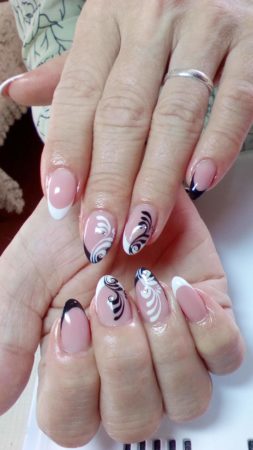
Wedding (ceremonial) nail design with shellac
Made with shellac is an excellent solution that will allow you to save a lot of time. You can safely do it a few days before the celebration and not worry that your fingers will look sloppy and not aesthetically pleasing. That is why, dear brides and fashionistas, we offer you several options for wedding manicure, which are also perfect for any special evening.
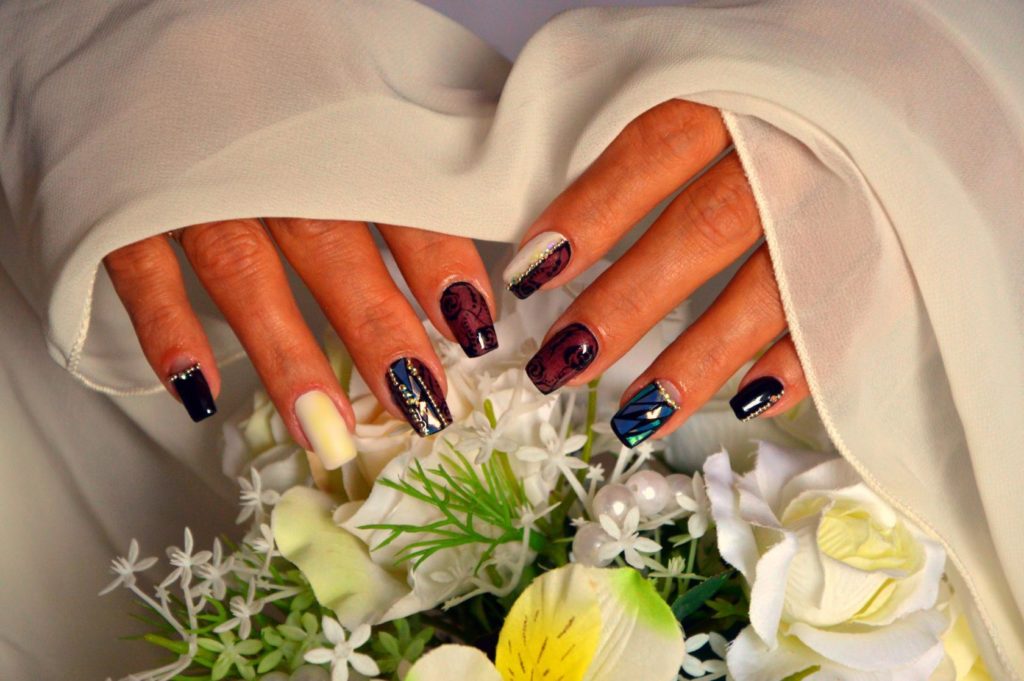
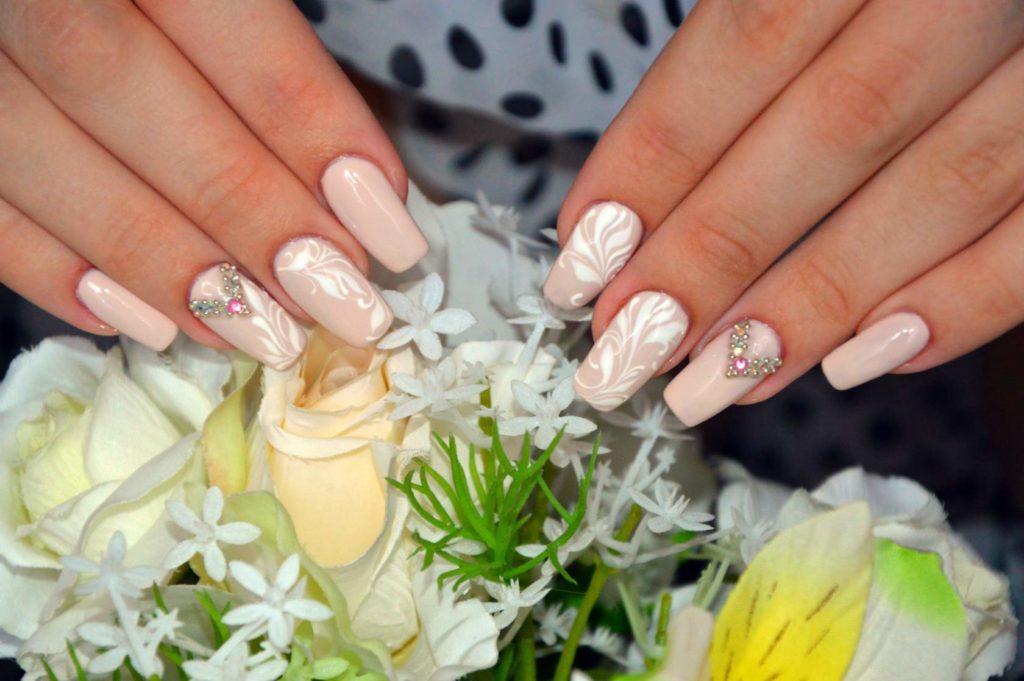
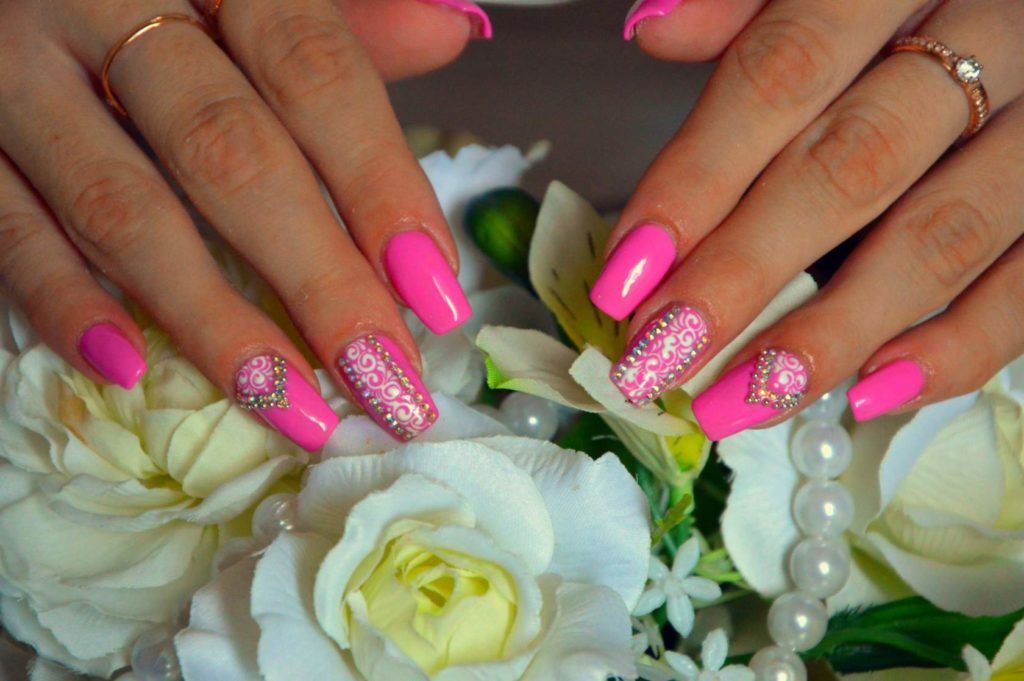
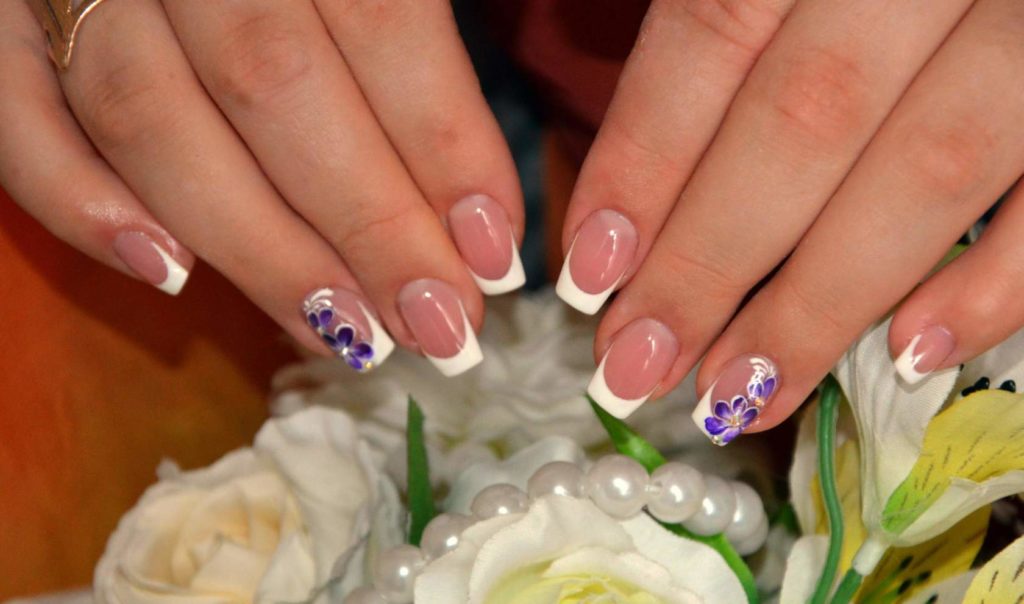
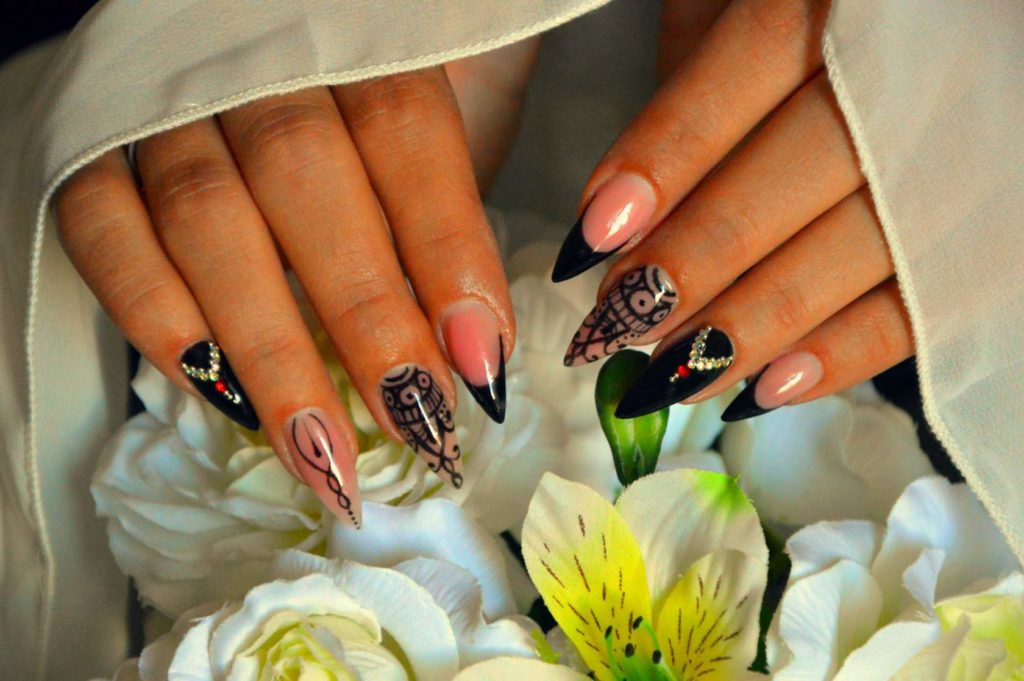
Option 1. Shellac - French lace manicure.
This design can rightfully be called classic. It is performed for weddings, birthdays, New Year and many other holidays. However, a wedding made with shellac will be distinguished by its luxury and solemnity. Complete the classic white French manicure with thin lace (also made with white varnish) carefully placed on all nails.
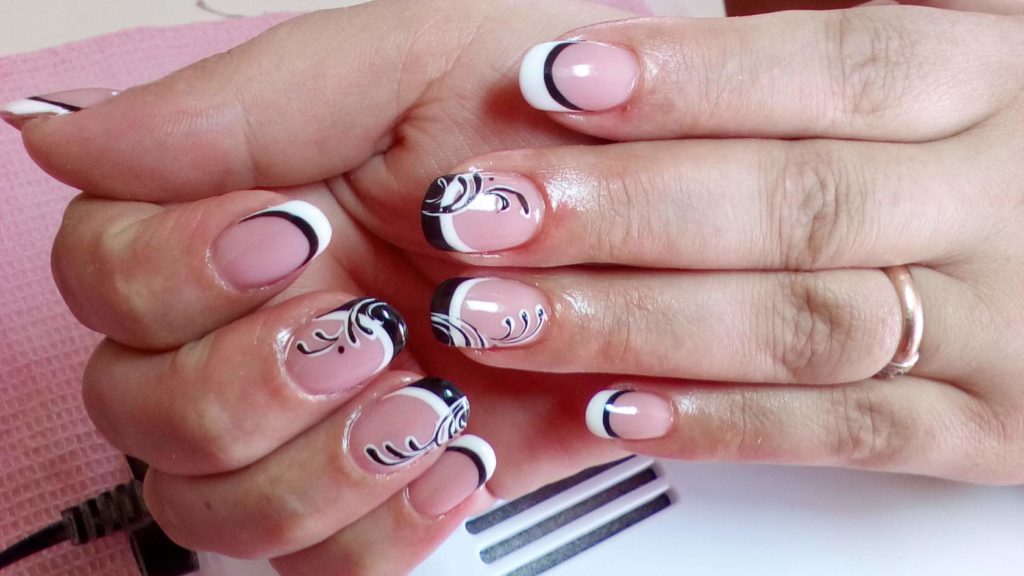
Option 2.
The first thing you must remember is that you should not overload a shellac manicure on short nails with an abundance of jewelry. Delicate tones or colors to match the dress will suit you like nothing else. Perform a manicure in white or beige shades, on ring finger Place a few small rhinestones or sparkles on your nail. 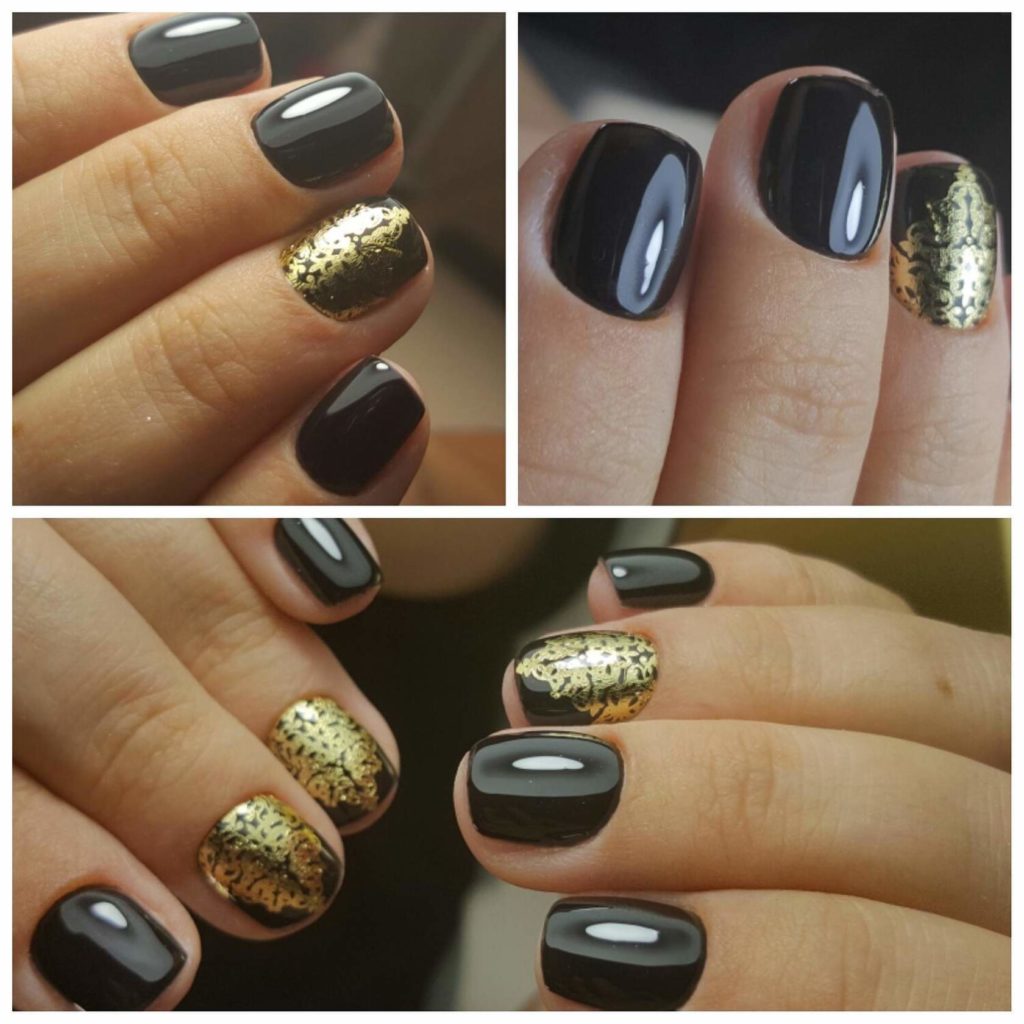
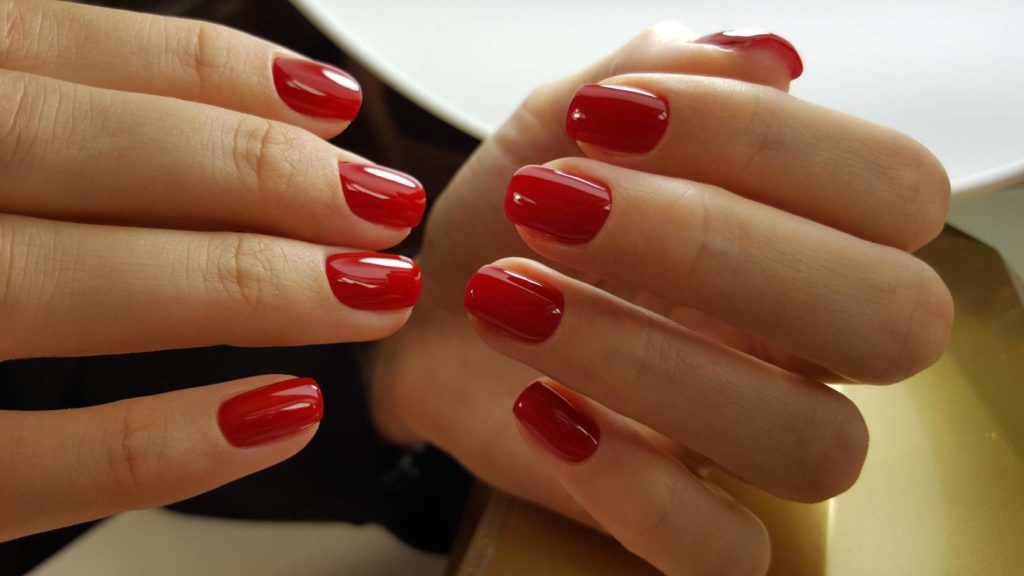
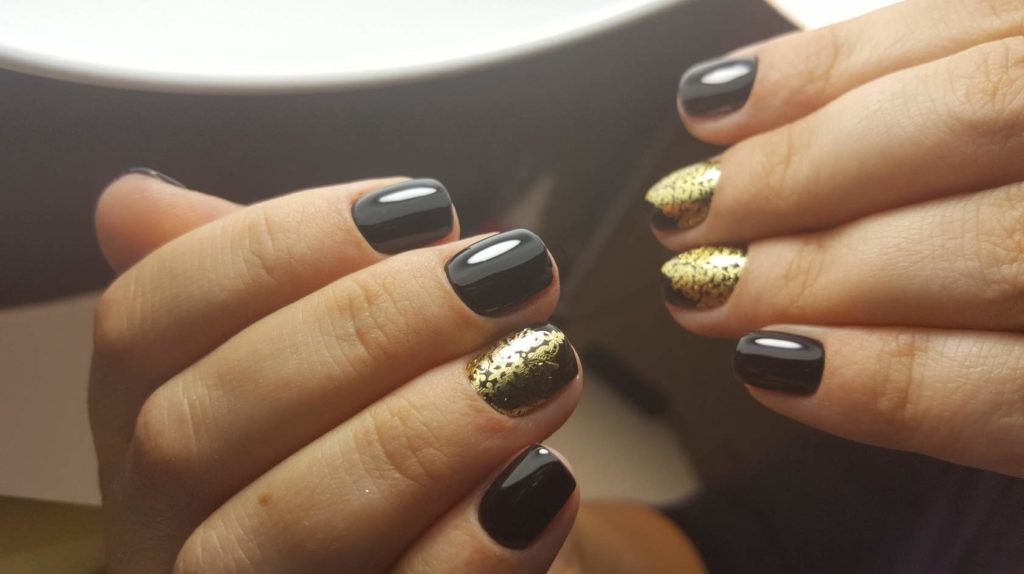
Option 3. Wedding manicure with roses
A wedding manicure made with shellac and complemented by an image of roses looks very gentle and unusual. This nail design is suitable for romantic and gentle natures. Cover the nail with a light pink shade, and along the edge of the nail, draw miniature roses in white or red. 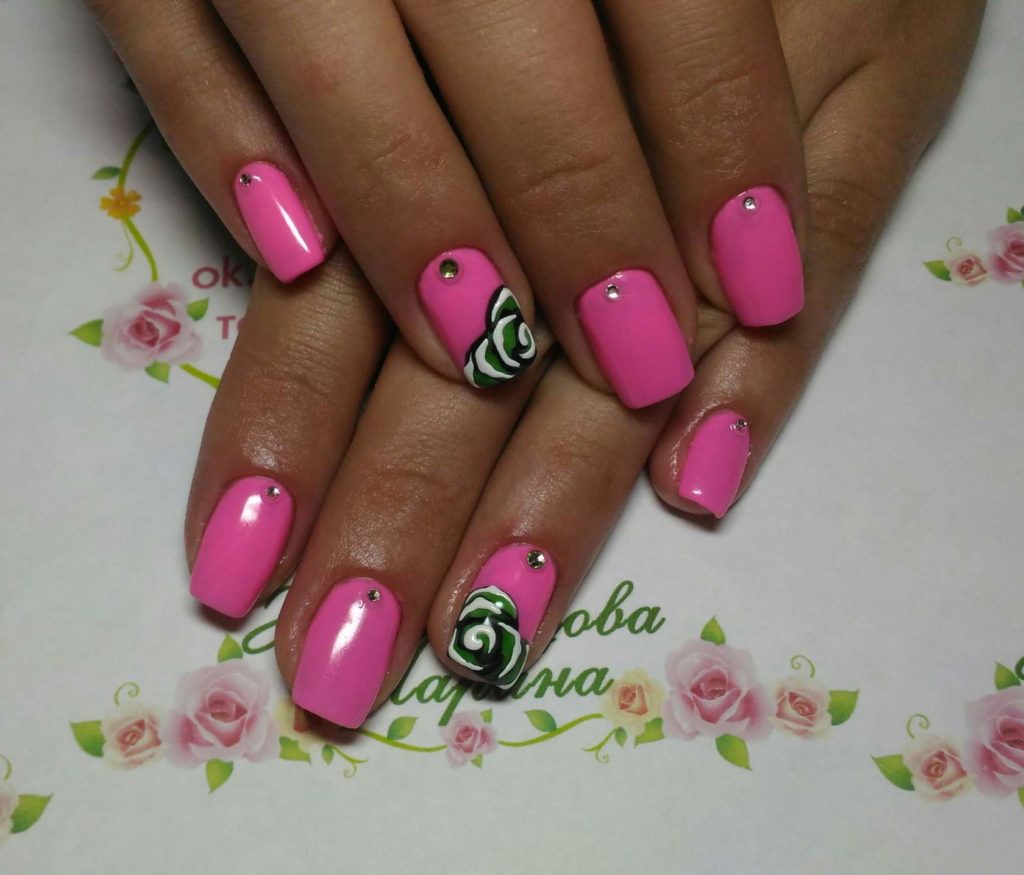
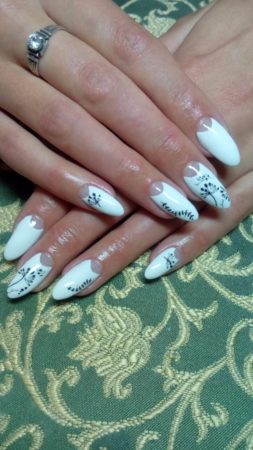
Option 4. Wedding manicure in gold color
It looks very unusual and elegant, made in gold color. Shellac coating will achieve a glossy effect, which will add luxury and elegance to the image. Cover your nails with white polish, then paint the top half with a gold design or flowers. This design does not require additional decorations, as it looks very solemn in itself.
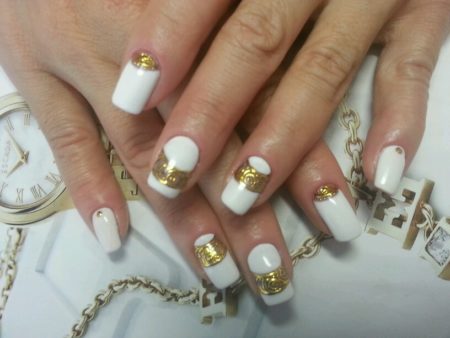
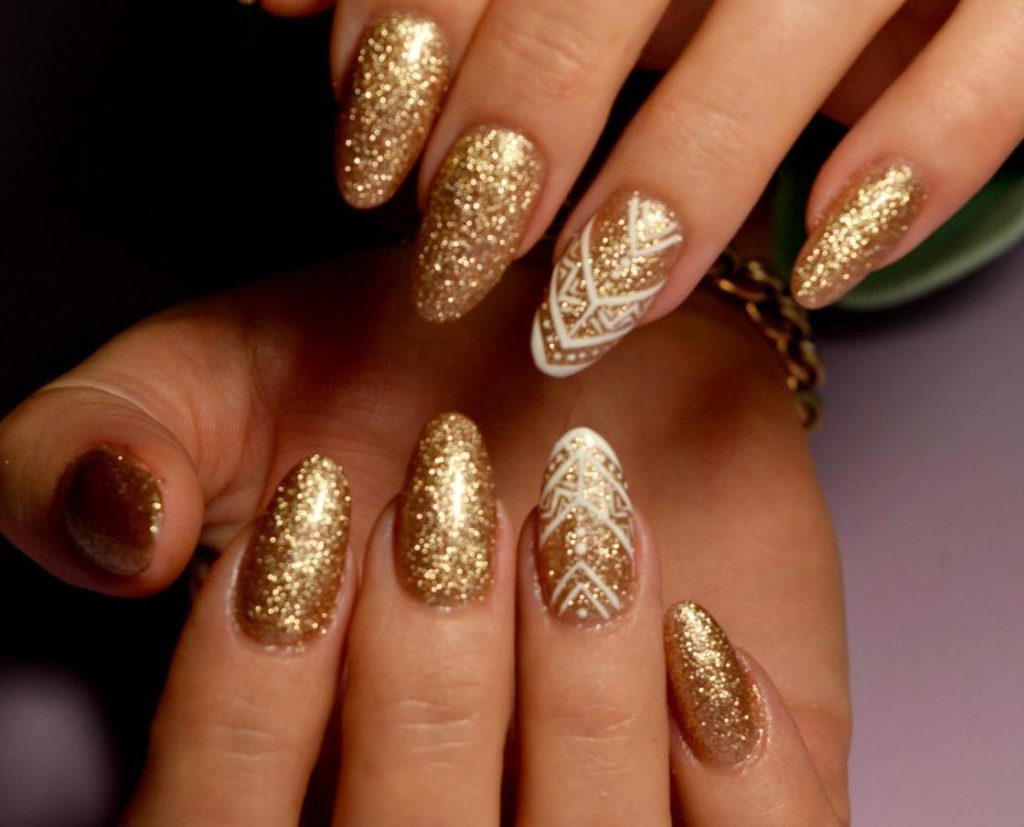
Option 5. Wedding moon manicure
Wedding lunar manicure has been occupying a leading position for several years now. With this manicure, the bottom hole of the nail is highlighted, the top is shaped as desired.
Do the same manicure on all fingers, leave the oval area at the bottom empty or paint it with a different color. Contrasting with the main one. This design does not require additional decorations, so the designs, as a rule, are on the nails moon manicure are not done.

Casual nail design with shellac
Plain color will never go out of style. That's why we offer you this option, as one of the most popular designs for everyday use. Use bright colors or muted, depending on where you are going today or where you work.
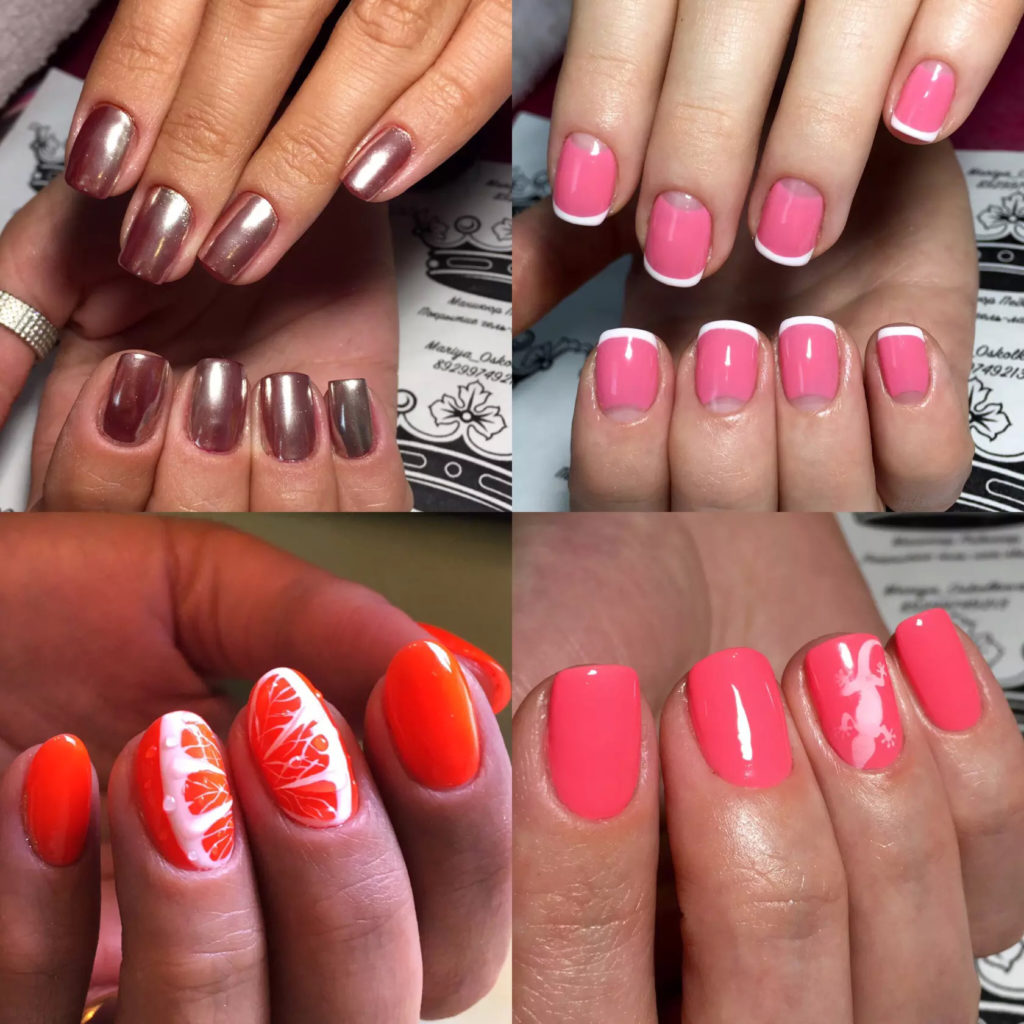
Also, don’t give up on bright patterns or delicate lace images; thanks to its texture, shellac nail design allows you to create real works of art on your nails.
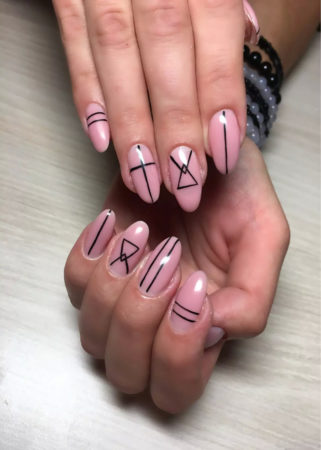
IN cold period relevant saturated dark shades shellac, in warm weather (spring, summer, early autumn) - delicate pastels or, on the contrary, bright, flashy.
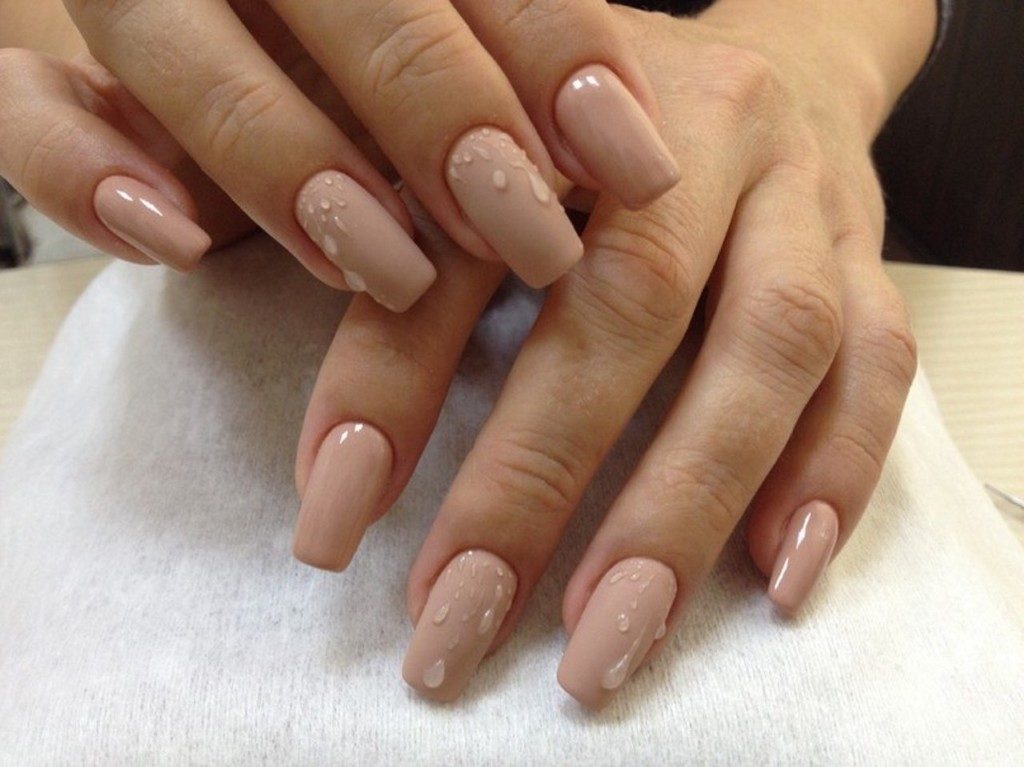
Shellac coating has remained relevant for several years. Create your own style and manicure using current and fashionable shades of varnish - bright red, warm taupe, emerald, pink cedar, mustard, lilac-violet.
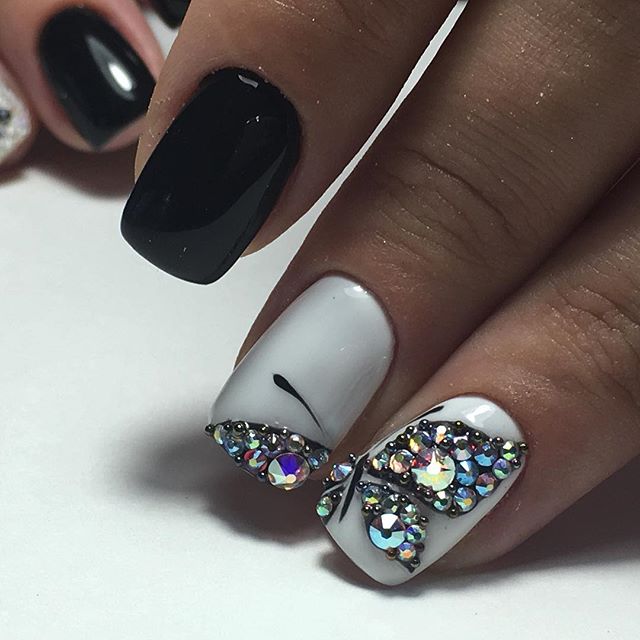
Option 1. Nail design with shellac and glitter
Cover your nails with a single color polish. Select sparkles of different diameters, 1-2 shades darker than the main color, but in the same color palette. Apply glitter to the free edge of the nail.
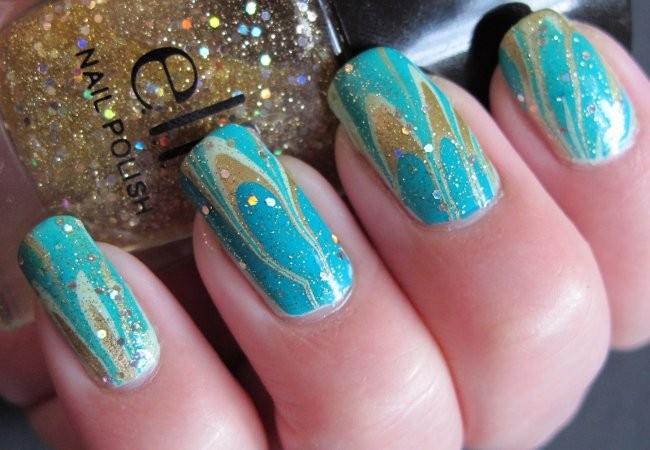
Option 2. Contrast
This shellac manicure is suitable even for short nails. Choose a neutral base and apply it all over your nails. Next, apply a leopard print pattern to one or two nails.
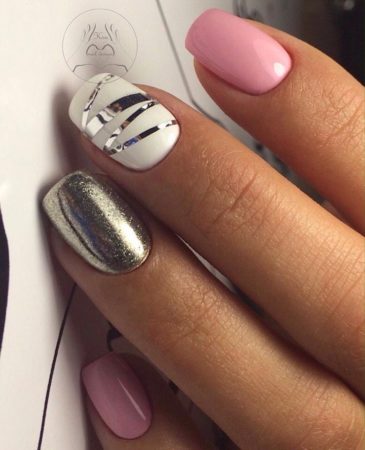
Option 3. Triangles
Shellac is applied in two layers, the first layer is the color you want the triangles to be. For example red or blue. Apply the first layer, seal the triangle, and cover the nail with the second layer – the base.
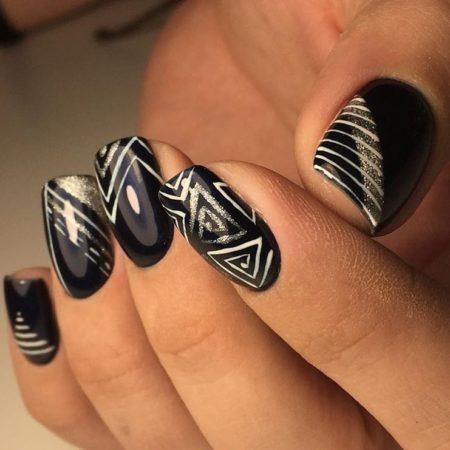
Option 4. Creative splashes
This design is ideal for creative and cheerful people. Apply light-colored polish to all nails. Next, use a brush to make random strokes or splashes of multi-colored polishes on your nails. That's all. An unusual, but at the same time very interesting manicure is ready!
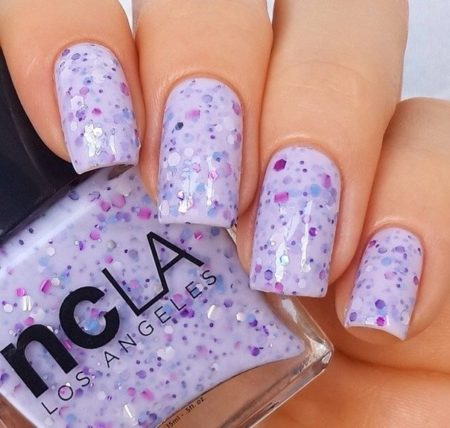
We told you how easy and interesting it is to combine shellac coating with nail art and decorative elements. But you can create interesting nail designs with shellac not only from specialists, but also on your own at home. All you need to do is purchase necessary equipment and take courses. Of course, this pleasure is not cheap, but once you receive all the necessary knowledge, you will become a real professional. In this case, you will be able to delight not only yourself, but also your friends with bright and beautiful nails, creating real works of art.
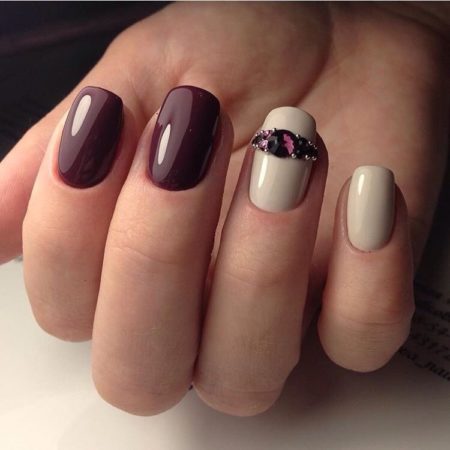
Shellac has been a leader in manicure coatings for several years now. For its many positive characteristics he received the approval and recognition of not only ordinary girls and women, but also nail service masters of the highest level.
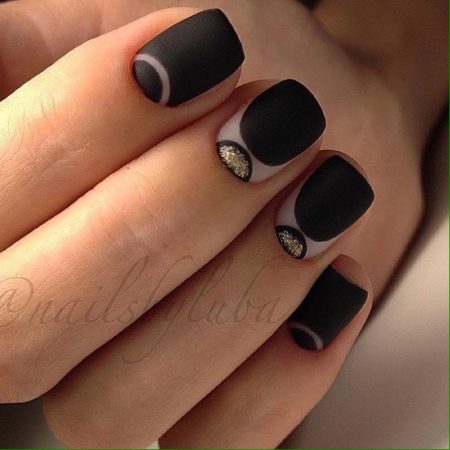
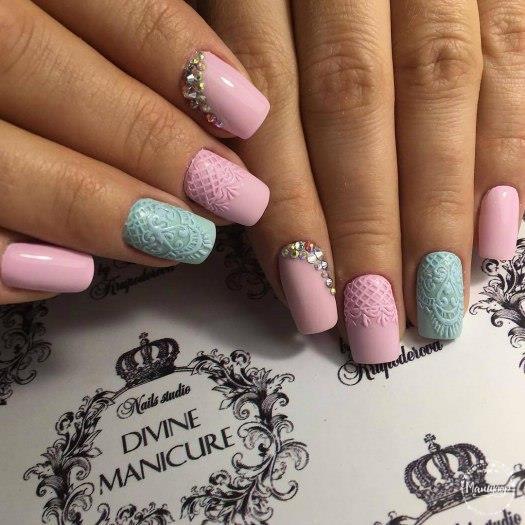
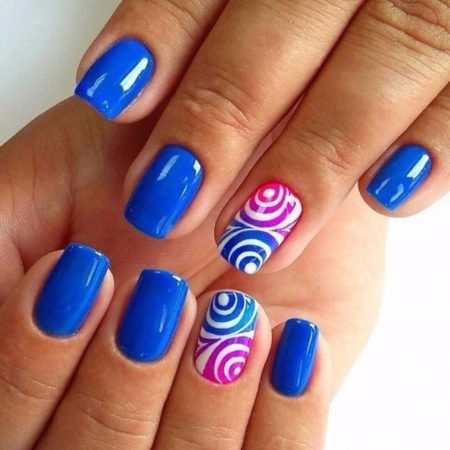
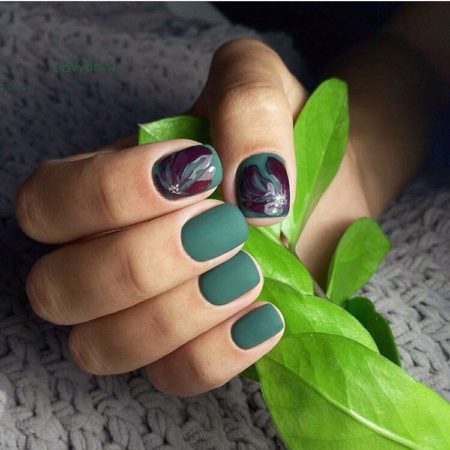
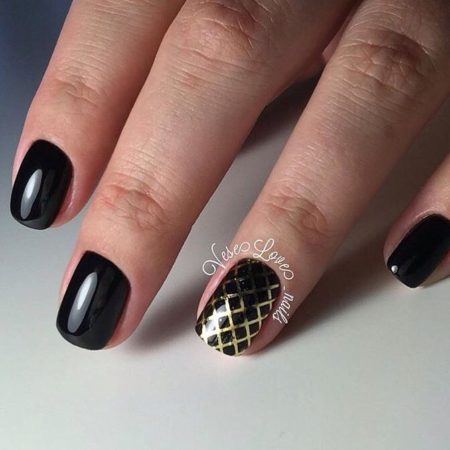
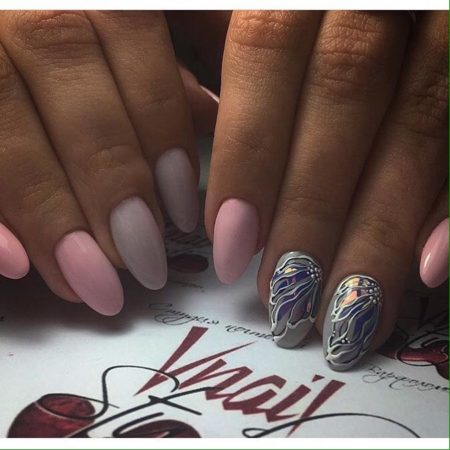
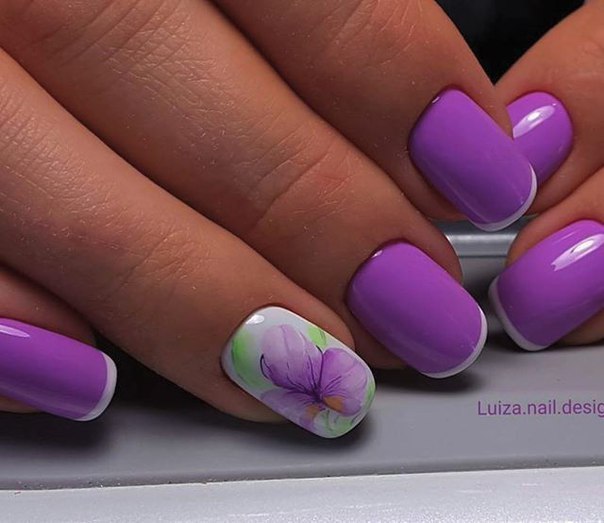
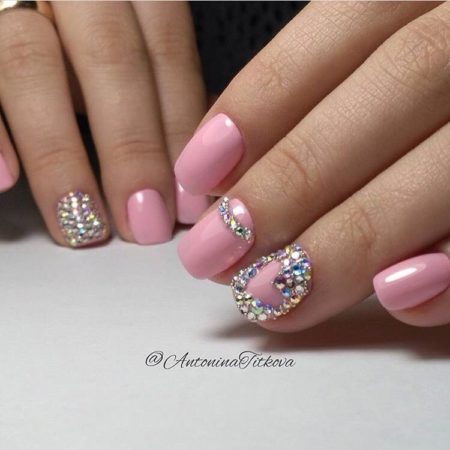
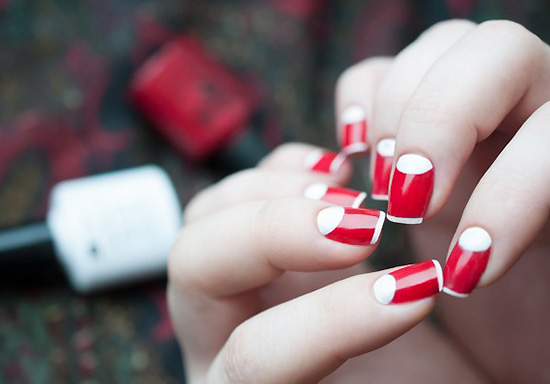
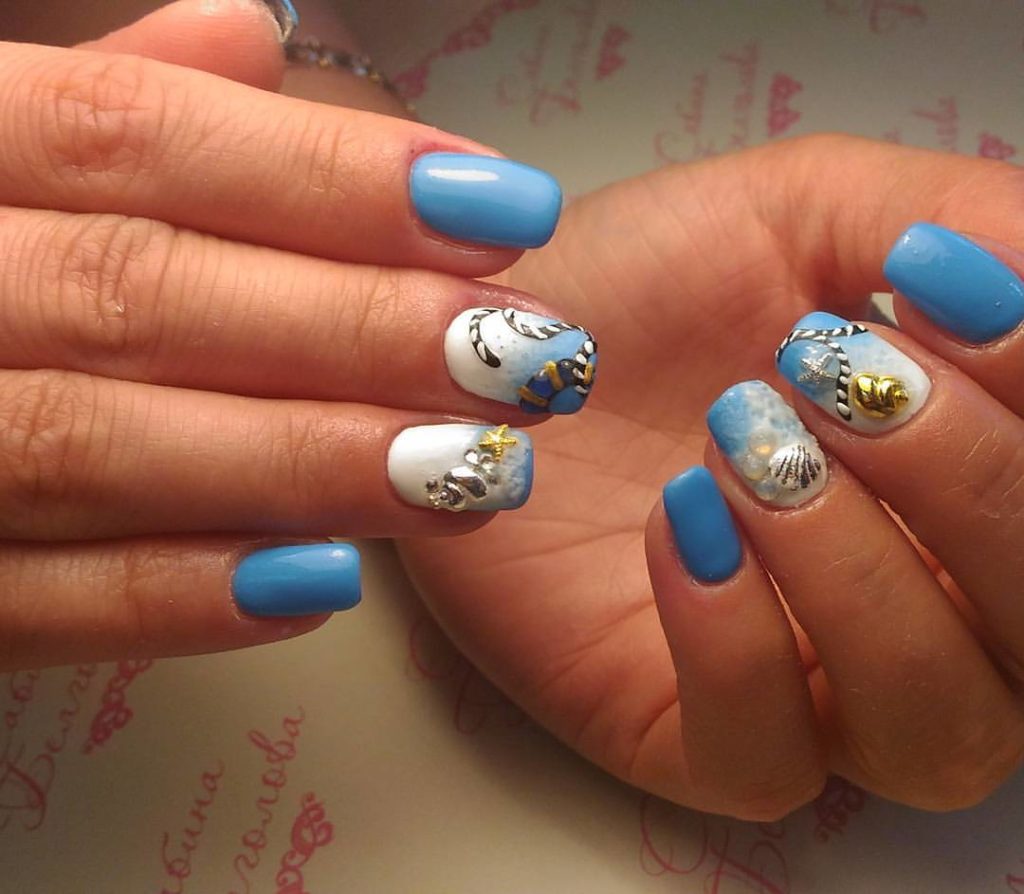
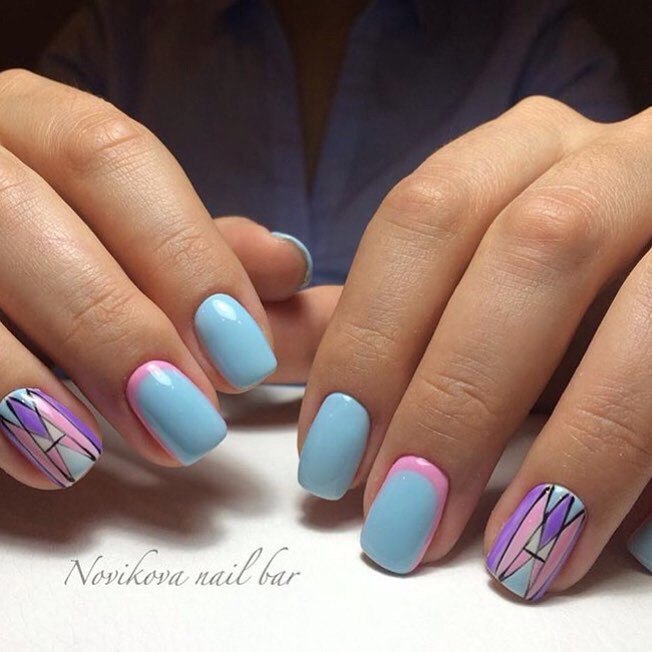
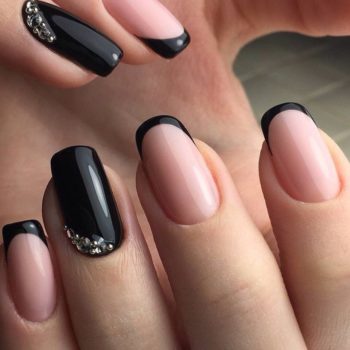
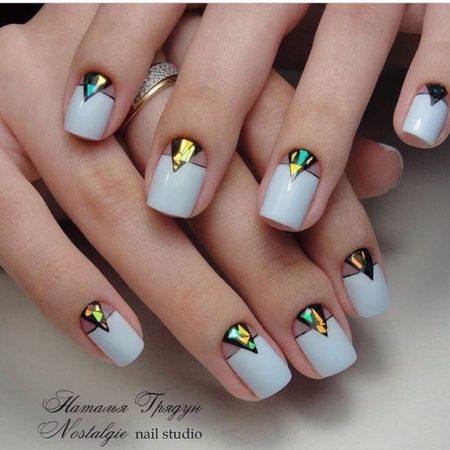
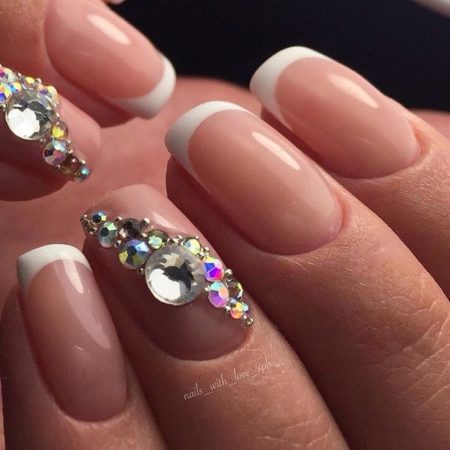
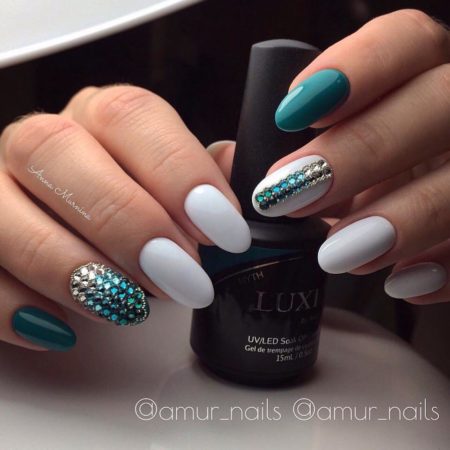
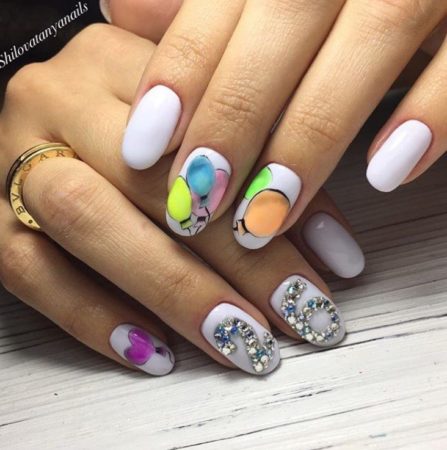
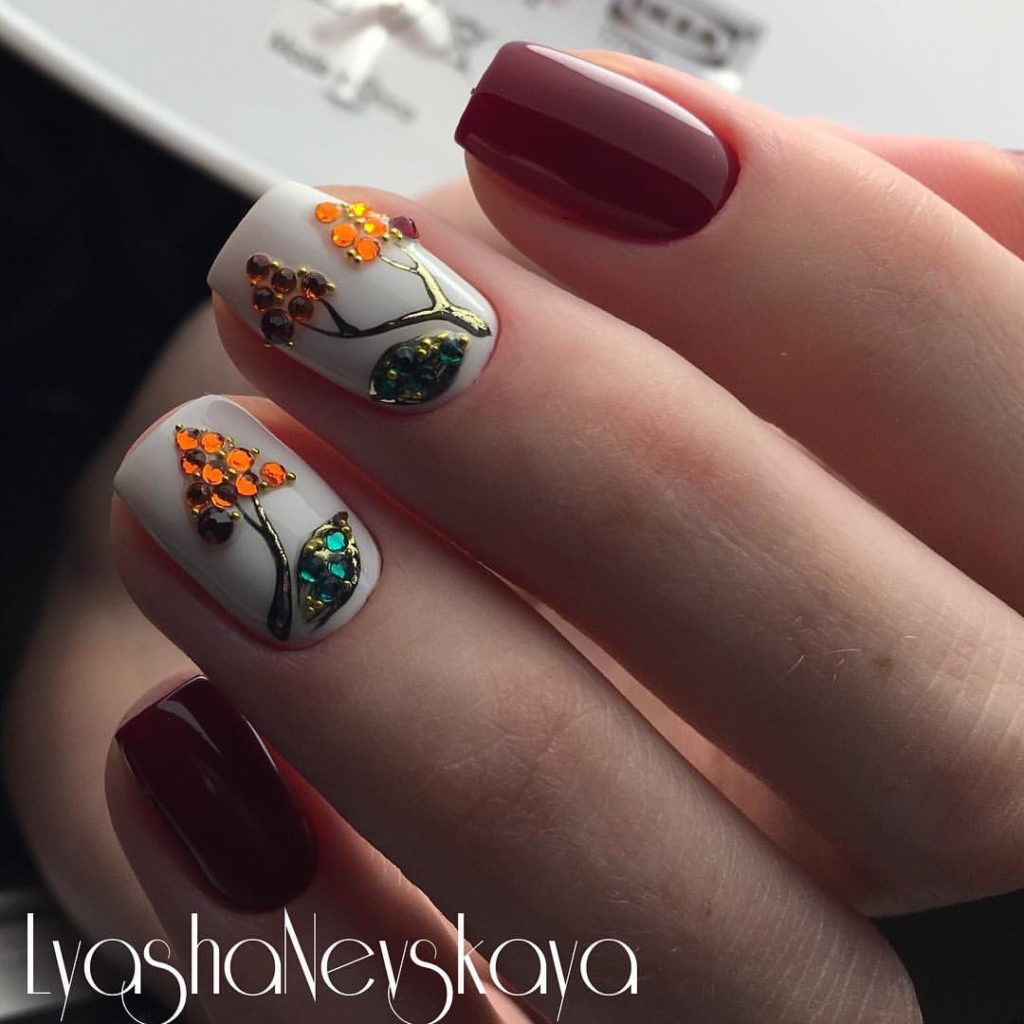
![]()
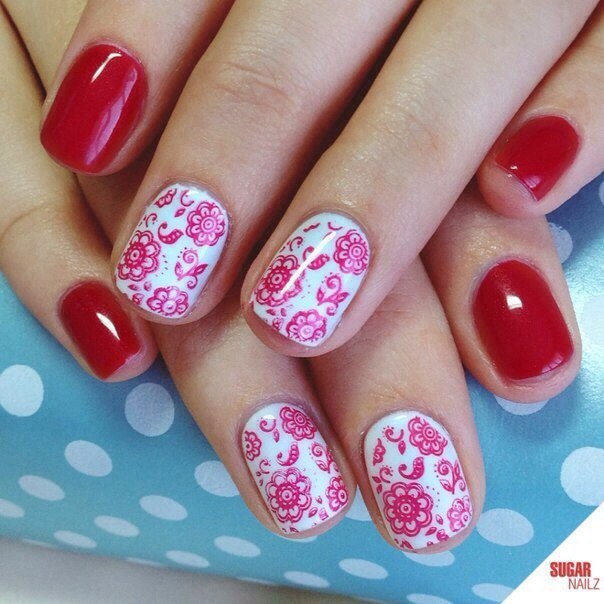
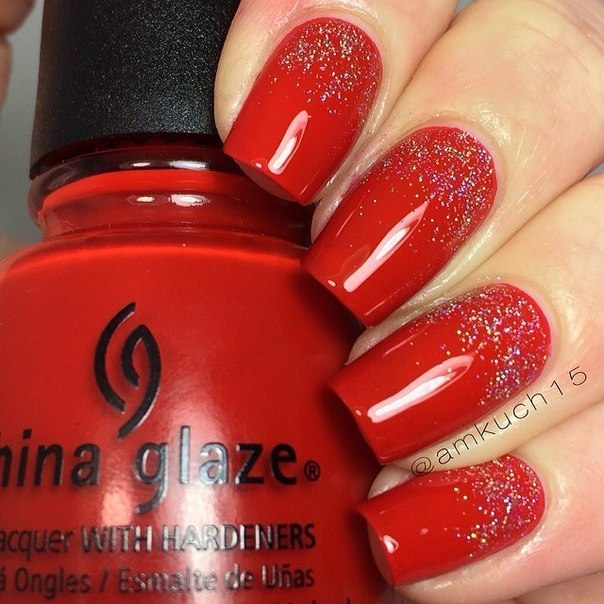
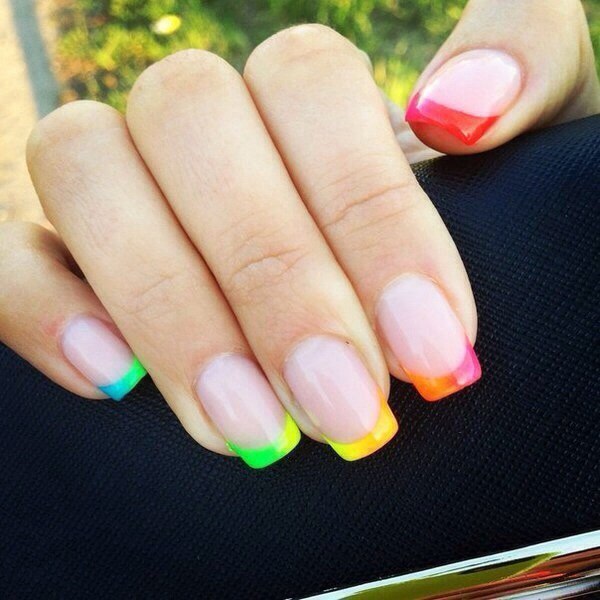
![]()
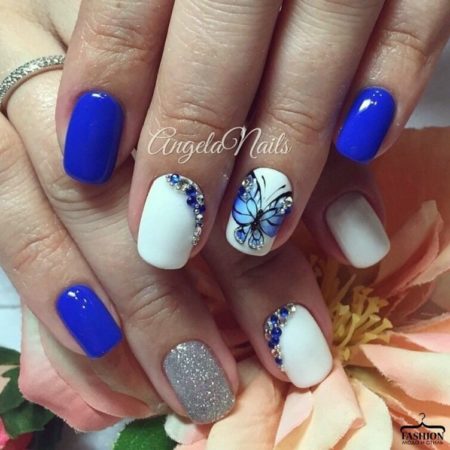
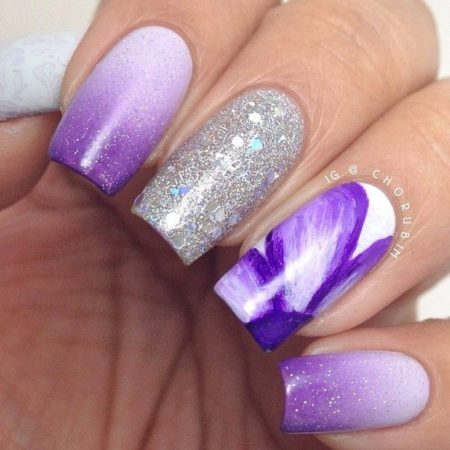
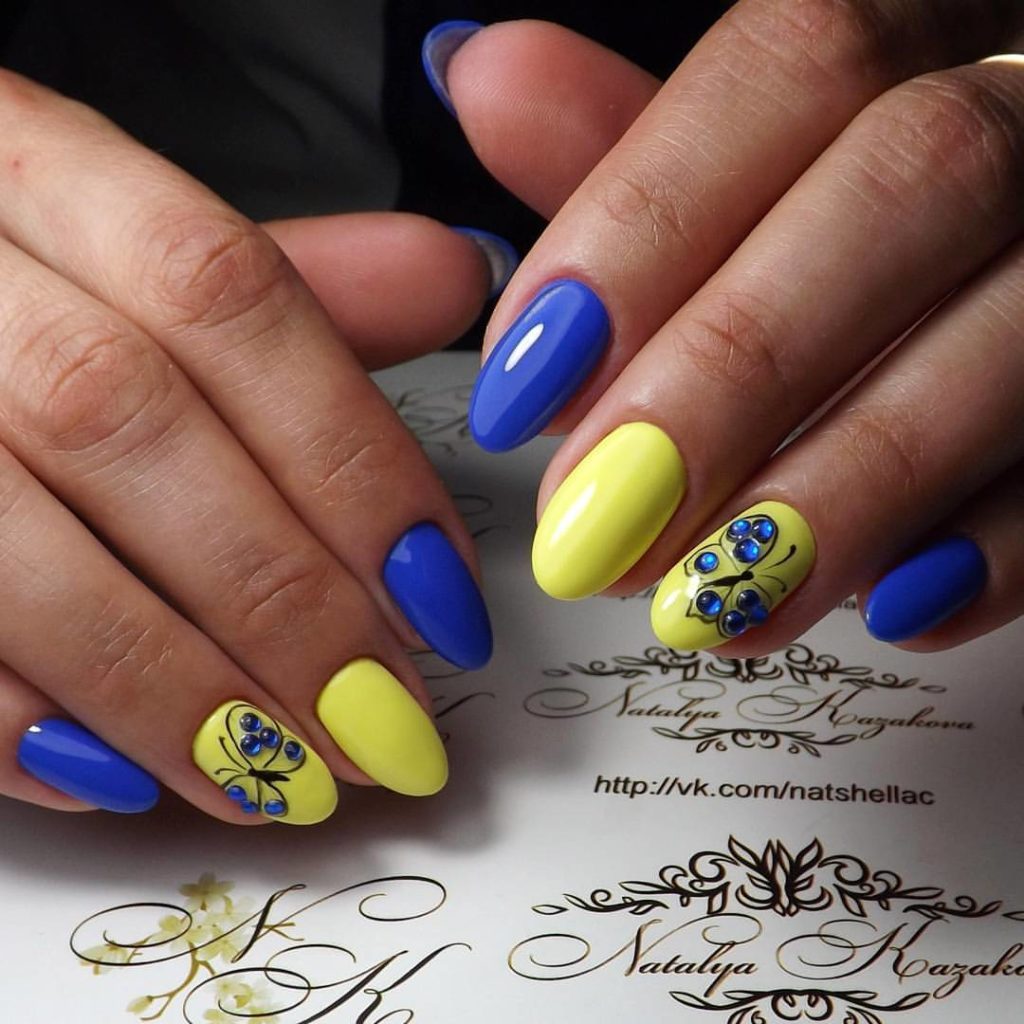
The emergence of an innovative tool for creating a strong, durable manicure called shellac is a breakthrough in the beauty industry. But many girls choose extended nails. The popularity of extended nail plates is explained by their convenience and practicality. After going through the extension procedure, you can admire beautiful manicure, for several weeks. But sometimes you get bored with your manicure design and want to update it. In this case, shellac, which can be applied over extended nails, will help. However, provided that the artificial nail is thin. Otherwise, the nail plates will turn out thick and ugly.
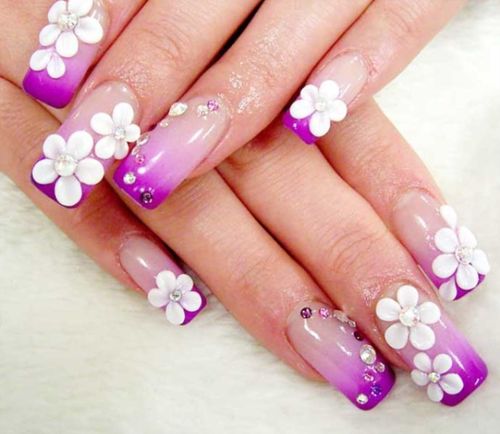
Application technology
Having found out whether shellac can be applied to extended nails and received a positive answer from specialists, every girl will ask a completely logical question about the application method? It turns out everything is extremely simple.
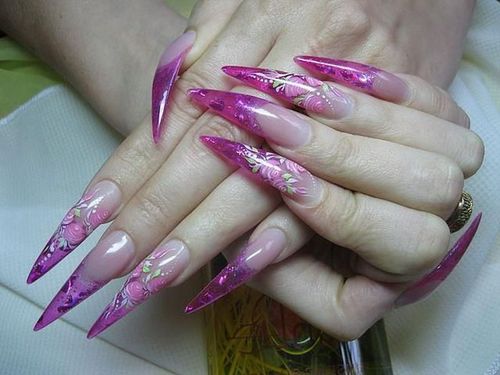
To apply shellac to the extended nails in the photo, you should proceed in the same way as applying gel polish to natural nail plates. The sequence of actions is as follows:
- Considering that extended nail plates can be perceived as quality basis, they do not need to be treated with a buff or coated with a primer.
- You can begin work immediately by applying the base. This layer is necessary to obtain high-quality adhesion of shellac to an artificial base.
- After drying the base, you can begin applying colored gel polish.
- To obtain perfect manicure, the first thin layer of shellac should be dried in a lamp and proceed to applying the second layer.
- After drying the second layer of colored shellac, we fix the result with a topcoat.
- Finally, dry the top and remove the top sticky layer.
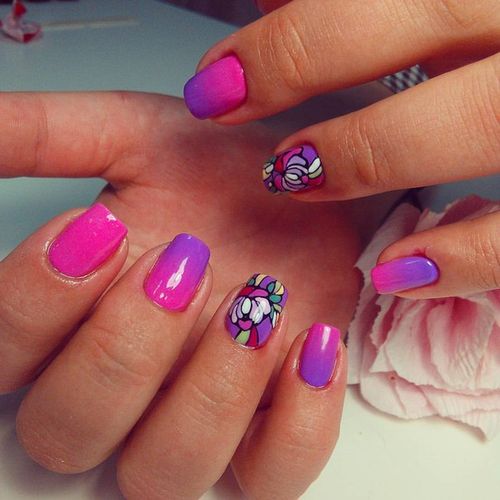
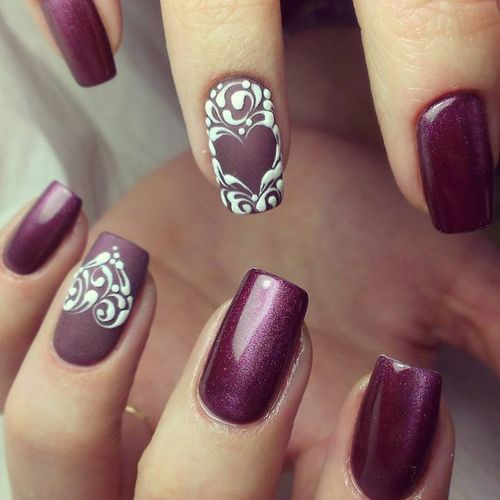
Important points
Extended nails coated with shellac can look beautiful only if thin layers of gel are applied. Otherwise, the thickness of the nail plate will increase, which will lead to unnatural appearance. Experts recommend covering acrylic nails with shellac. They are initially thin and additional layers of gel polish will in no way spoil their appearance.
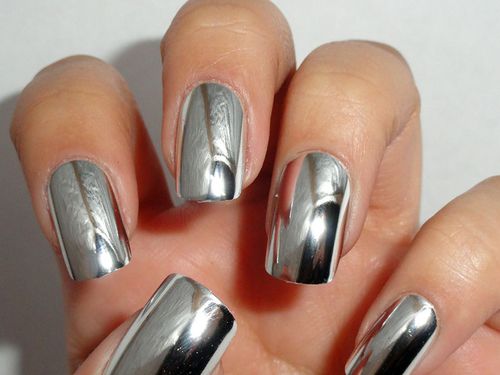
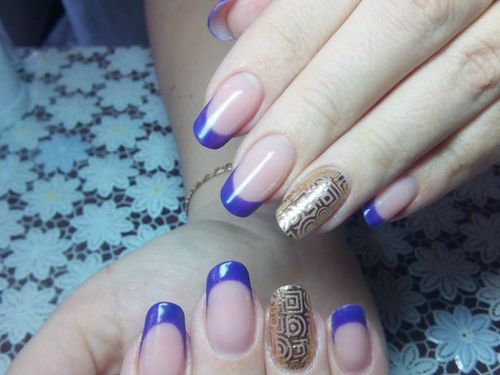
How to remove shellac from extended nails? The technology for removing gel polish is the same in all cases. Regardless of what base is used to apply shellac, it should be removed using special liquid, cotton swabs and clothespins that secure the lotions on each nail. The compresses last for at least 10 minutes. But to prevent the soaked layer from hardening, it is recommended to remove each cotton swab from the nails gradually. After removing one lotion, you need to carefully remove the peeling coating with a wooden stick. There is no need to press hard on the nail so as not to damage the integrity of the extended coating. If it was not possible to remove all the shellac in one go, as in the photo, the procedure must be repeated.
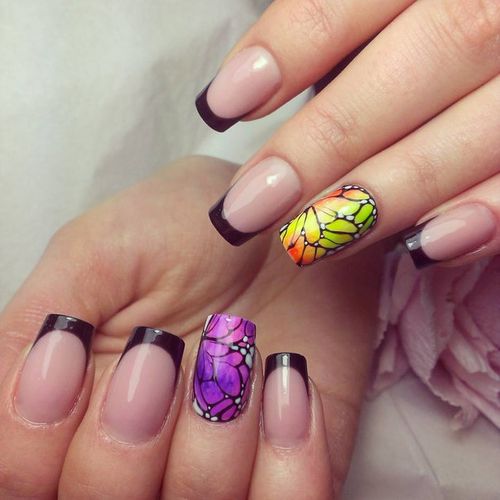
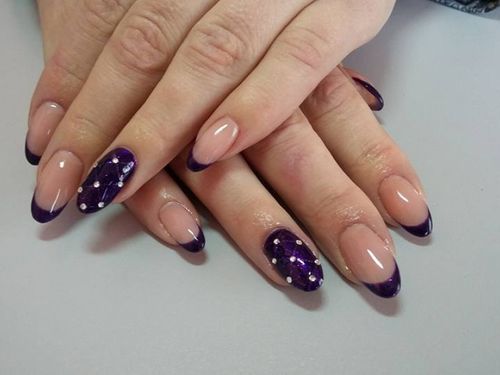
The video shows detailed instructions How to properly remove shellac from extended nail plates.
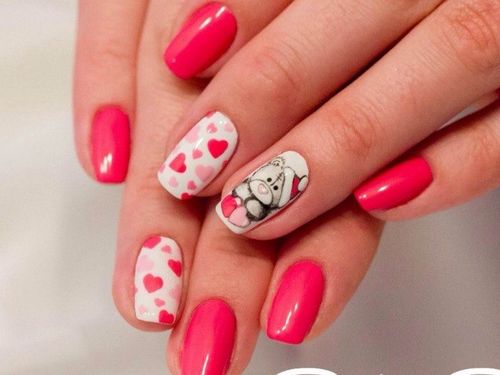
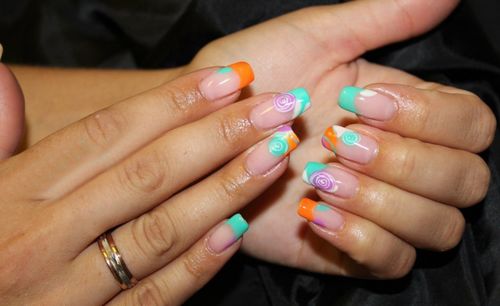
When asking the question, you can apply shellac to extended nails; not every girl thinks about the advisability of this procedure. Masters claim that artificial nails coated with shellac look unpresentable. To apply high-quality gel polish to the extended surface, you need to have experience in manicure.
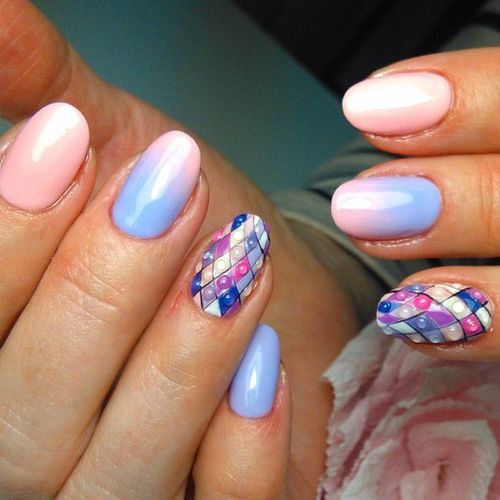
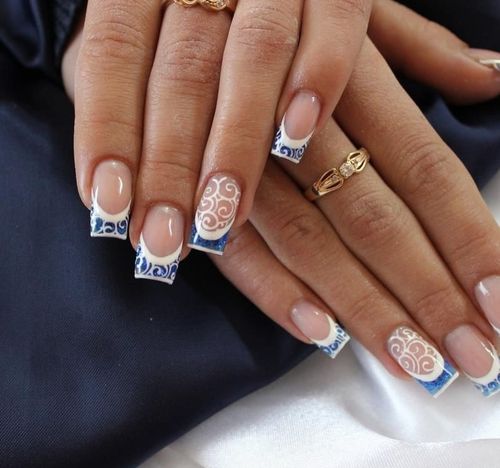
If this is not available, there is no point in undertaking such experiments. Moreover, regular varnish on extended plates lasts a very long time. Therefore, it is not advisable to re-decorate a finished manicure.
In conclusion, we note that you should not conduct experiments on your own appearance. If you prefer nail plate extensions, show off the results. Applying gel polish over artificial nails is not advisable from a financial and aesthetic point of view.
Methods of applying gel polish to extended nails
Extended nails undoubtedly have advantages, including the ability to create any length and shape, as well as the durability of the manicure. Properly extended nails retain their ideal appearance for so long that a manicure update is not required for 3-4 weeks. But what to do if the design has become boring before, and your hands are itching to change it?
There is no need to immediately make an appointment with a specialist and pay for a design update. Applying gel polish will solve the problem and maintain the durability of the manicure.
Features and recommendations for applying gel polish on extended nails

The procedure and technique for applying gel coating to artificial nails is not much different from the standard procedure, but there are some nuances that need to be taken into account.
Just like when covering natural nails with gel polish, you need to first shake the bottle with the product so that the pigment is mixed.
To make the manicure aesthetically pleasing, gel polish should be applied to extended nails in the thinnest possible layer. The fact is that a gel nail is much thicker than a natural one, and 2-3 dense layers of gel polish are unlikely to add grace and aesthetics.
Technology of applying gel polish to extended nails
It is not advisable to steam your nails, it is better to apply special remedy to remove cuticles and push back or trim cuticles.
- Use a special file for extended nails to file the free edge.
- Artificial nails do not need to be coated with primer, but degreasing the nail plate is essential.
- Some people recommend using a base. It is needed so that the gel polish adheres to the surface of the extended nails. When applied to natural nails, a base coat is necessary: it protects against negative impact and ensures adhesion of the layers. Covering artificial nails with a base is not critical.
Note! Extended nail plates must be impeccably smooth - only then will the gel polish look presentable. It is recommended to polish the surface of the nails before applying base.
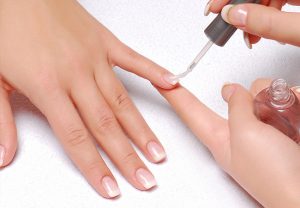
- The base must be dried under a UV lamp for two minutes.
- Apply the first layer of gel polish without streaking to the side ridges and cuticle, sealing the free edge, and then polymerize. If a streak has formed, it can be removed with an orange stick (before drying in the lamp). Sealing is necessary to make nails aesthetically pleasing by hiding their thickness.
- If necessary, apply the thinnest possible second layer of gel polish and also dry.
Cover your nails with the finishing topcoat and place under the lamp for two minutes. Which top is better to use? There are two options:
- finishing top with a sticky layer for gel polish - will provide a high-quality coating without chips;
- finishing top with a sticky layer for hard gels (for extended nails) - perfect for such a coating and will last until correction.
A finish without a sticky layer will not work, as it will not preserve the integrity of the gel polish on artificial nails.
- Dry the top under the lamp.
- If desired, make the design with rhinestones. Without removing the sticky layer, apply a single-phase transparent gel to the coating in the places where the rhinestones will be located. Place the rhinestones and outline with a thin brush with gel. If the rhinestones are small, you can apply them directly to the top before drying.
- Dry in a UV lamp.
- Remove the dispersion layer.
- Care for extended nails with gel polish
Girls, chasing fashion and practicality, sometimes forget that under layers of gel, real nails suffer from a lack of useful components and oxygen. On damaged nail plates, no extended nails or gel polishes will stick firmly and look aesthetically pleasing, which means that care is necessary.
Firstly, it is necessary to exclude any mechanical impact on the artificial nail plate. Simply put, stop mercilessly using your nails as a household tool. Gel is a very fragile material, which in case of unexpected destruction can ruin the natural nail.
For at least a couple of days after applying gel polish, it is recommended to do housework with gloves.
Secondly, making nail baths is not advisable, but rubbing valuable oils and vitamins into the cuticle is what you need. The nutrition of nails comes from the cuticle, which means that all useful components must get there.
Removing gel polish from extended nails
Gel polish is similar in composition to the material of extended nails, so the coating can be removed along with artificial nails, which will dissolve with acetone.
The question may arise: why are ordinary varnishes washed off with acetone without damaging the artificial nail plate, but gel polish is not? The thing is that one minute is enough to remove nail polish, but to remove gel polish with acetone you need to keep the lotions on your nails for at least five minutes. In one minute, the artificial nail material does not have time to dissolve, but five minutes of acetone will be enough to ruin the surface of the artificial nail.
There is one solution for removing the gel coating from extended nails - oils and products that do not contain acetone.
Covering extended nails with gel polish – new trend in the nail industry. This is not to say that this is a perfect solution, but there is something about it: it is practical and durable.
A boring design on thin artificial nails can be easily changed using gel polishes at home. In this case, it is better to leave thick artificial nails alone or paint them with regular varnishes that do not contain acetone.
Photo of nail polish coating
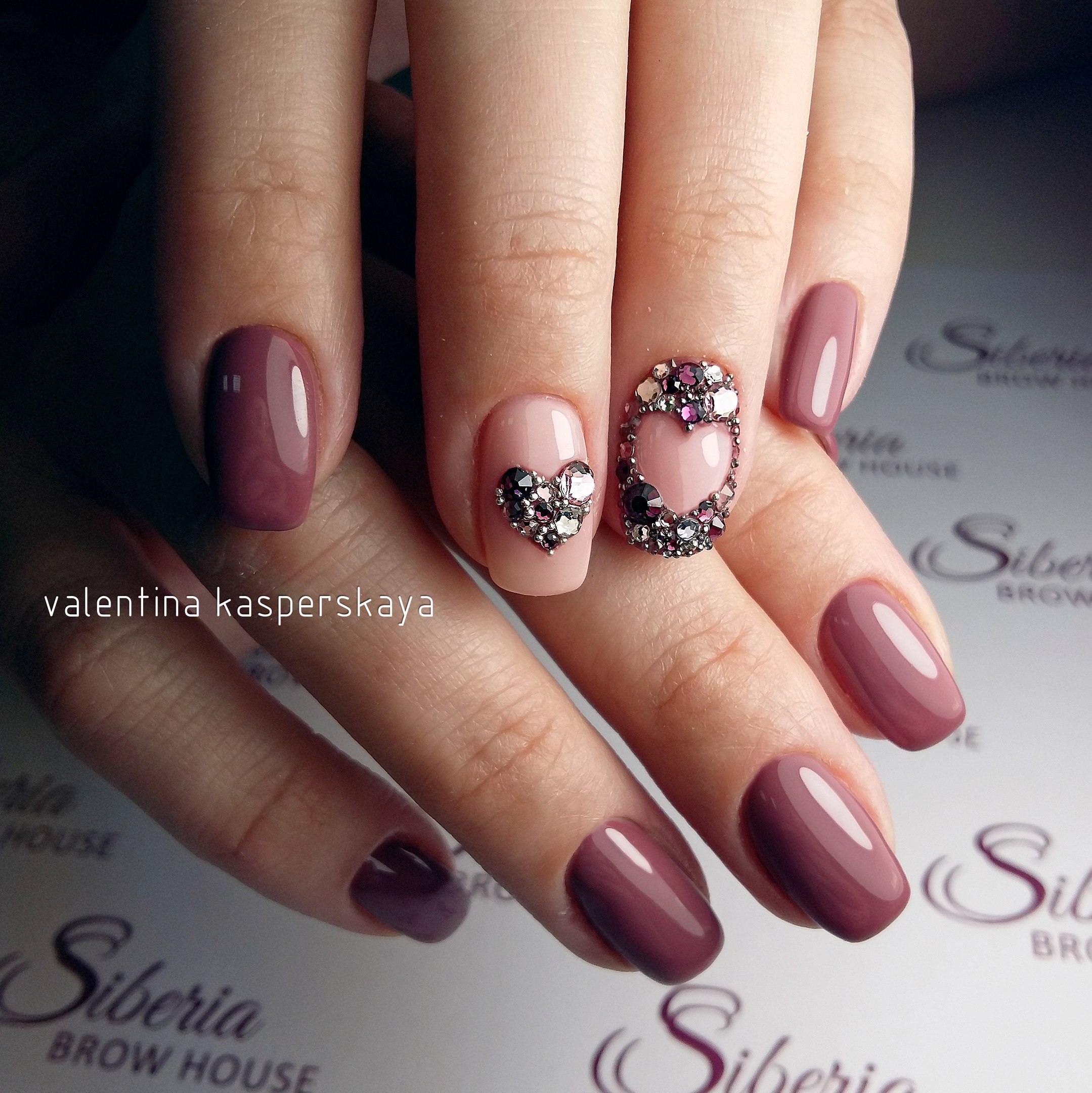
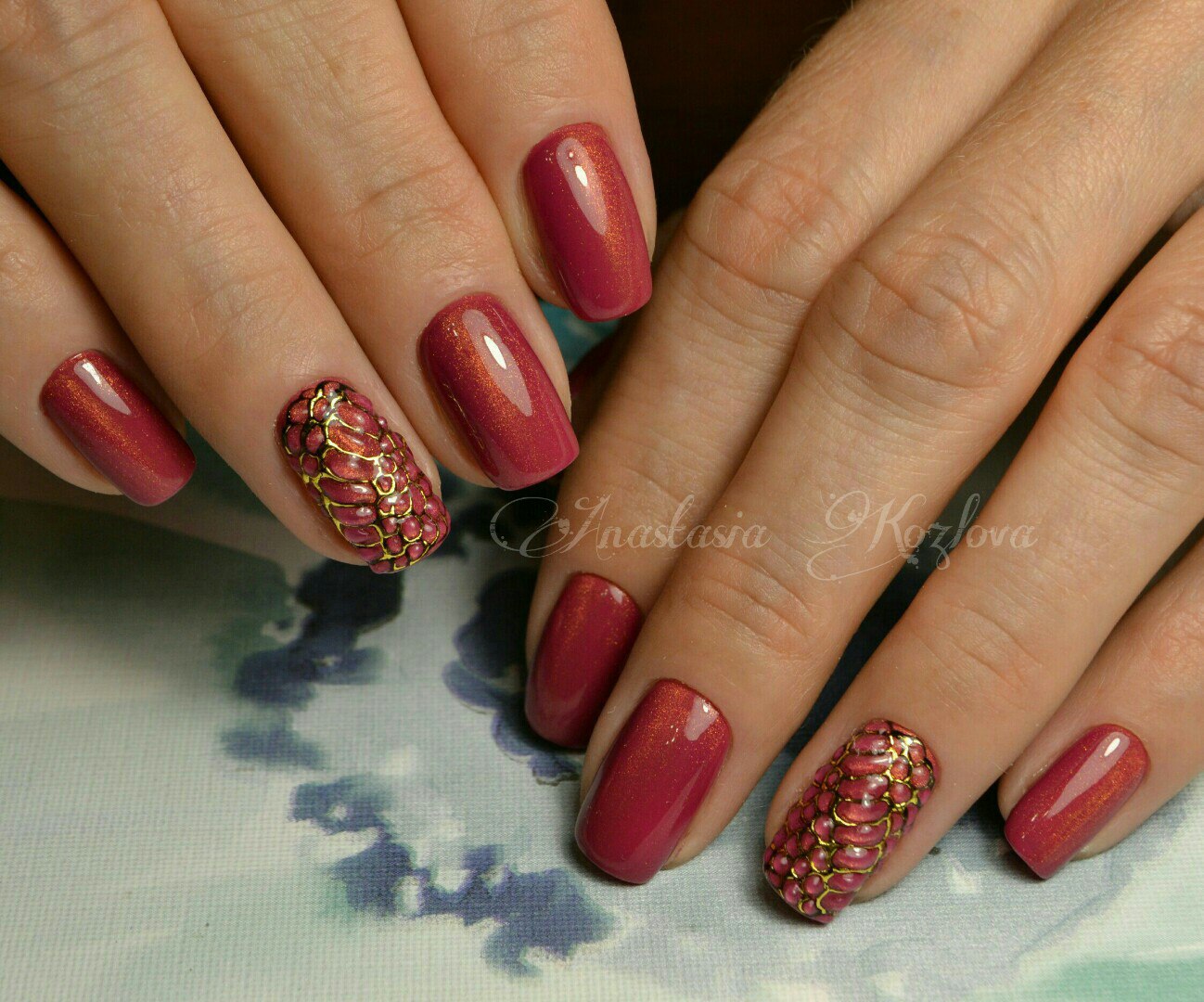
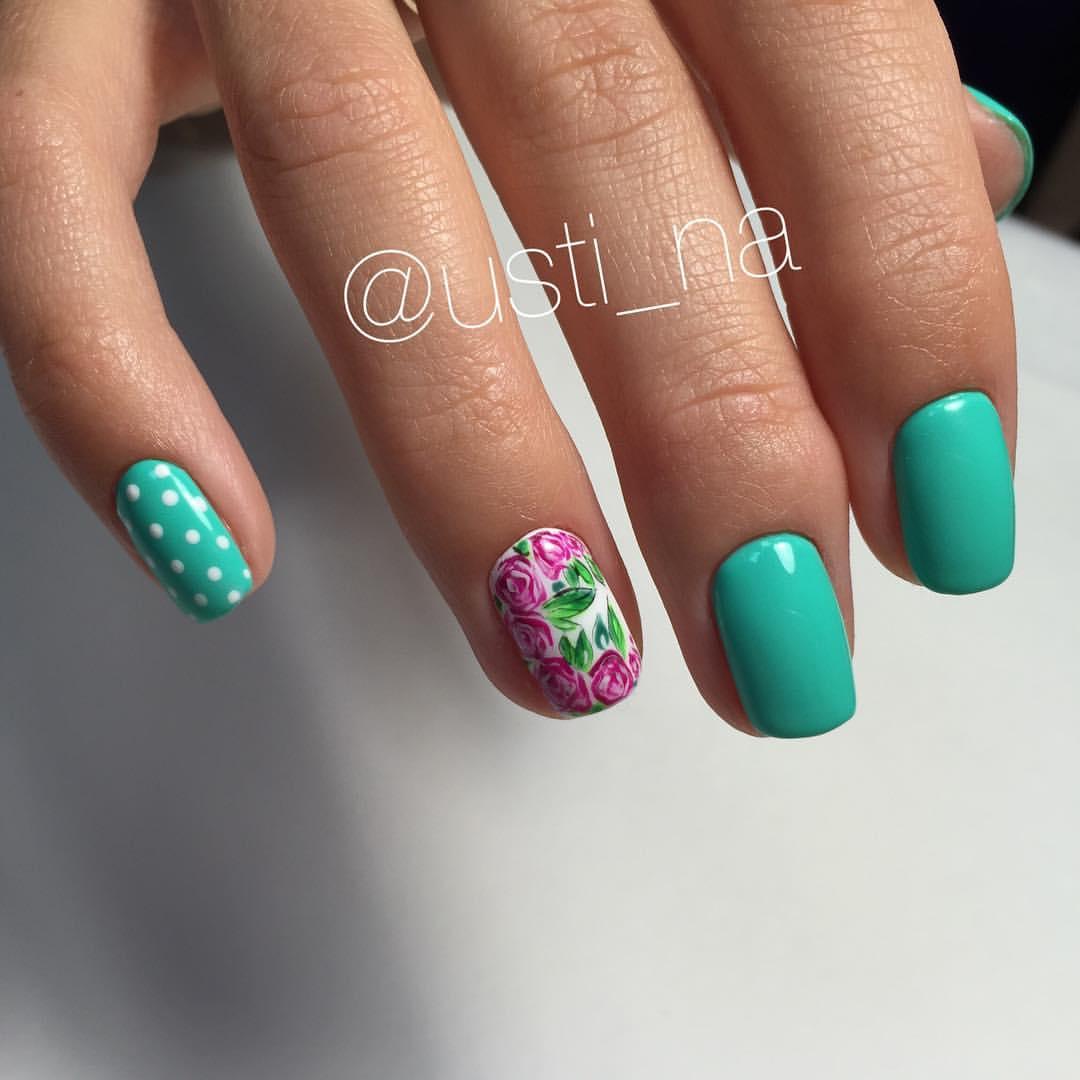
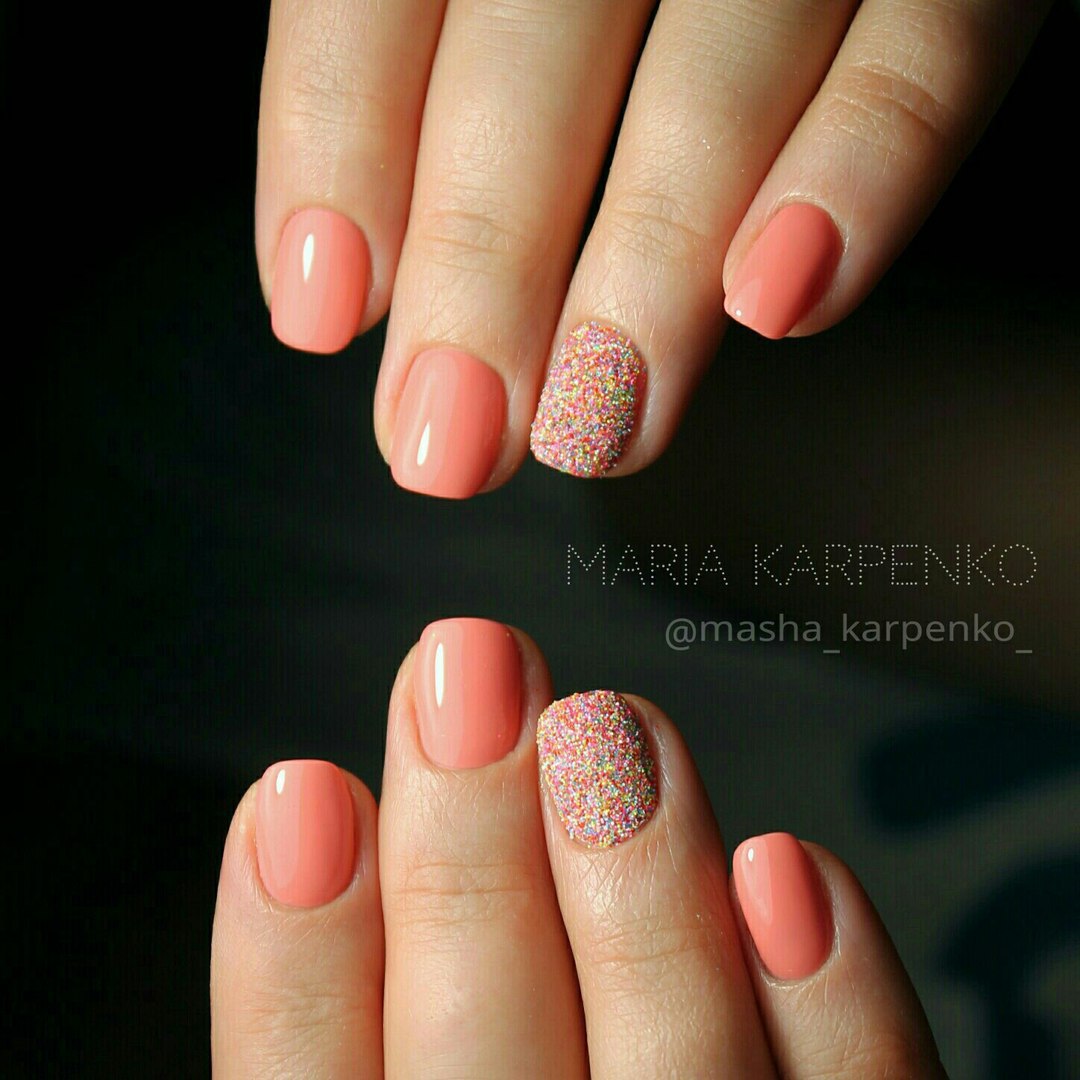
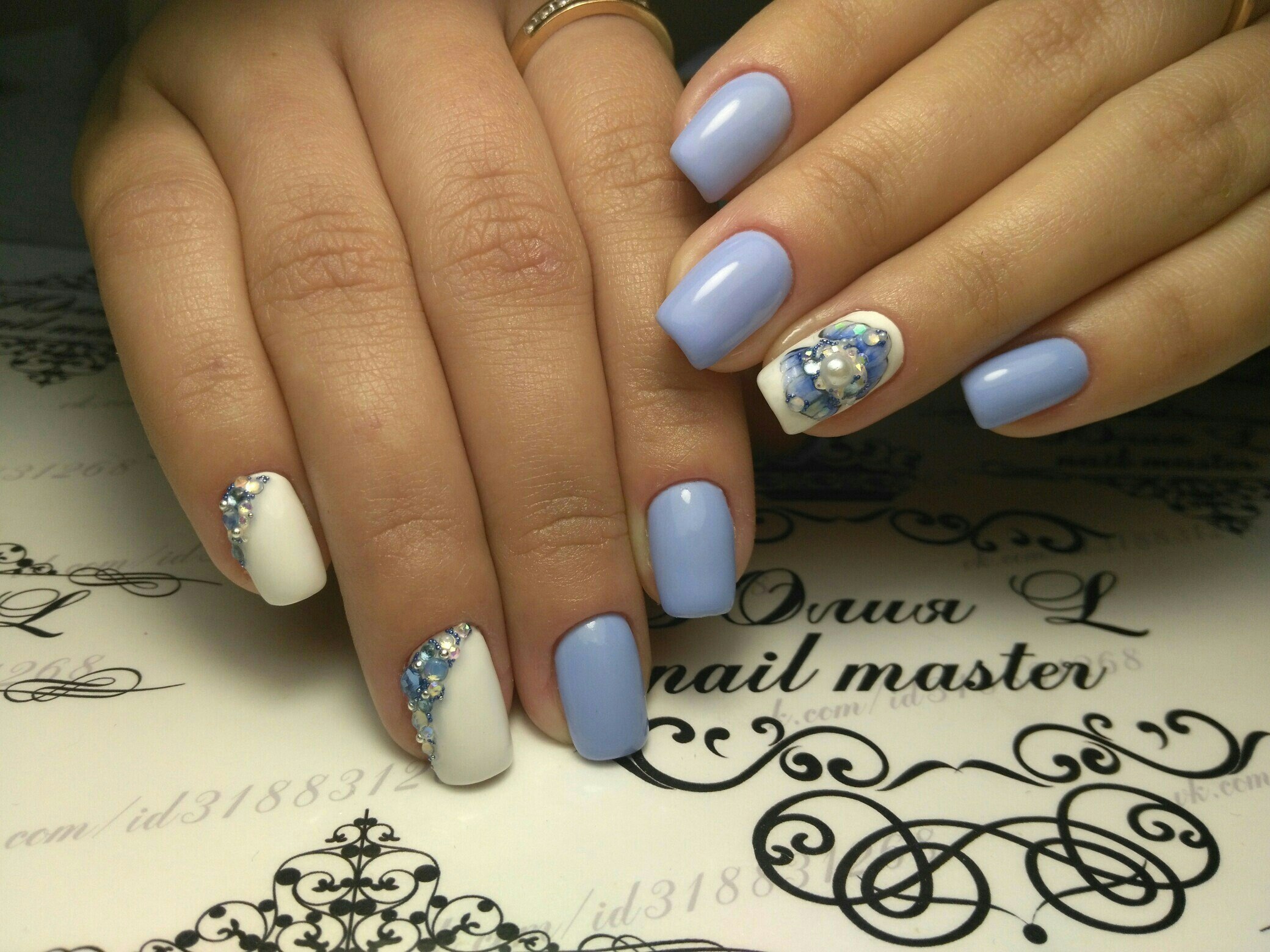
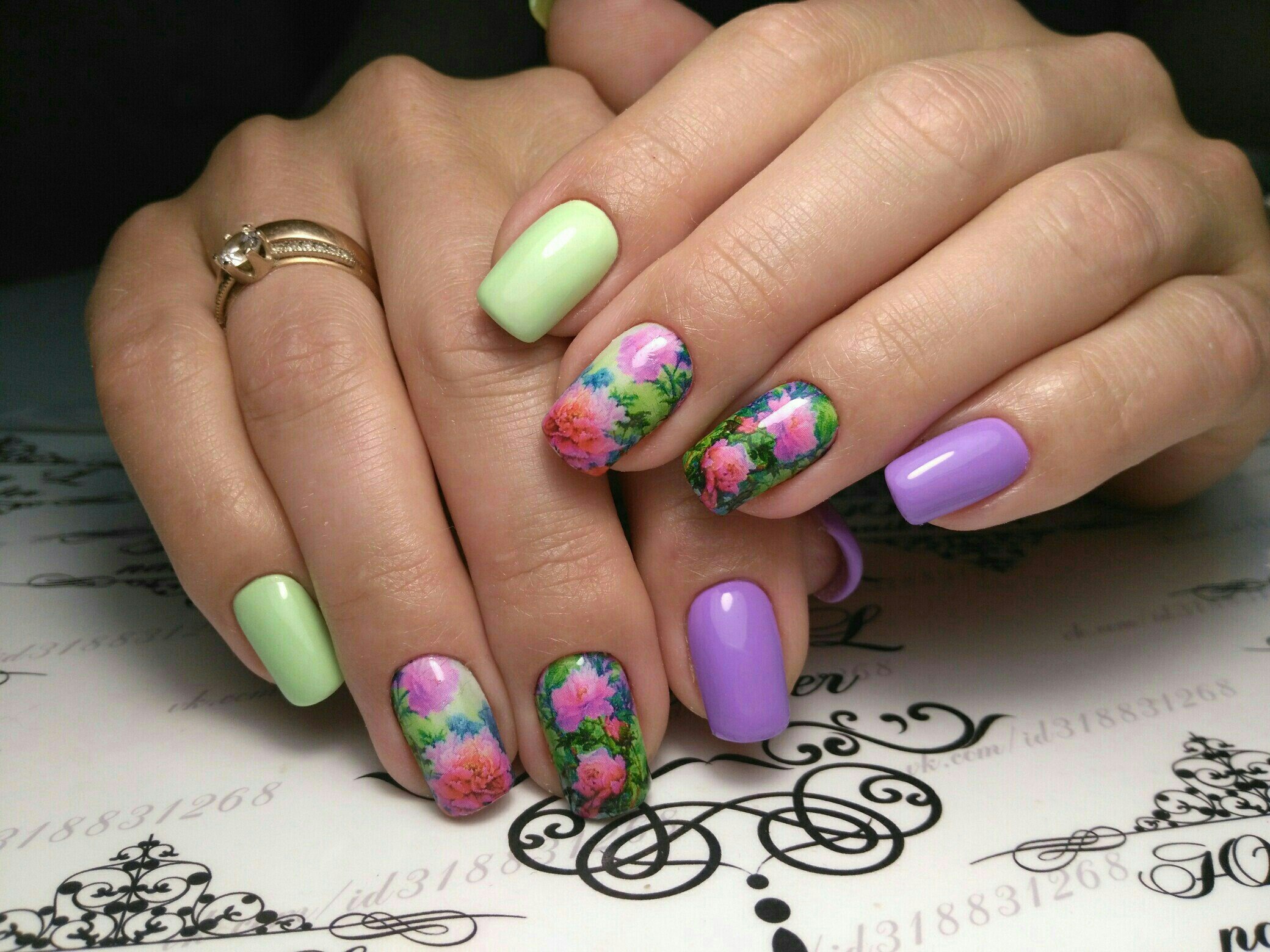
When using shellac there are always many questions left. The answers to many of them are given below.
Is it possible to apply regular varnish over shellac?
According to the advice of shellac manufacturers, ordinary varnish cannot be applied to shellac, since the shellac coating technology itself is violated. They have completely different qualitative and quantitative structures, shellacs are completely safe for health, and ordinary varnish has a number of toxic ingredients. And, in general, the desired effect of beautiful and durable nails is not achieved. In the case of applying varnish on shellac, with the subsequent application of a fixative, such a coating does not stay on the nails for even two or three days, chips and unevenness form. In order to save money on colored shellac varnish, many still apply regular varnish to the base coat; this primarily affects the nails and the quality of the coating.
Is shellac harmful for nails?
Shellac is harmless to the health of nails, because... it contains no toxic substances such as formaldehyde and other dangerous resins. It can be applied during pregnancy without fear for the health of mother and baby.
How to apply glitter to shellac?
Glitter is applied to shellac after applying layers of colored varnish. They are applied to a sticky layer, and the final topcoat is applied on top. After the topcoat, the nails are dried in a UV lamp. The sticky layer is removed with cotton wool and alcohol.
How to apply rhinestones to shellac?
Rhinestones are applied to shellac in the same way as glitter.
How to apply bluesky shellac?
Shellac BlueSky is applied in the same way as any other shellac. First, a base coat is applied, then dried with a UV lamp, bluesky shellac is applied in several layers, each layer is also dried with a UV lamp, and finally a top coat is applied and dried.
How to apply shellac on artificial nails?
Shellac should be applied to extended nails in the usual order - base layer - two colored layers - final layer.
Can shellac be applied to gel nails?
On gel nails Shellac can be applied in the same sequence as on natural nails. In this case, the question may arise about the feasibility of such application and the large thickness of the resulting coating.
How long does shellac last on nails?
Shellac lasts quite a long time on nails. It all depends on the correct application technology, the quality of materials and the use of nails in everyday conditions. A high-quality shellac coating lasts on the nails for two to three weeks.




